There are TVs that come in for testing and you immediately think: "oh, another average one, probably like many others." And in fact… that's true. The TCL C7K doesn't try to dethrone the OLEDs, it doesn't shout from the box "revolution!". And yet, after a few days of testing, it's hard not to think: "wow, this is really good equipment." And that's exactly what the C7K is. The biggest asset of the C7K is its decent picture at a reasonable price – MiniLED and quantum dots do their job here. The colors are vibrant, the brightness is satisfactory, the contrast is impressive, and with the right settings, you can truly enjoy viewing in the best quality. The second strong point is the fluidity of motion – both in sports and in games. Support for HDMI 2.1, variable refresh rate, 144 Hz, and a whole bunch of other features make playing on this TV a pure pleasure. Additionally, there's Google TV, which – despite minor shortcomings – provides access to nearly an endless library of applications. Voice control, quick access to YouTube, Netflix, AirPlay support – everything you need for daily use is here. Are there any downsides? Sure. The Google TV system sometimes experiences moments of "hesitation," and MiniLED – like any MiniLED – can stumble on very challenging movie scenes. But those are details. After all, the C7K is a mid-range model – and in this class, it simply performs excellently. So if you are looking for a reasonably priced, modern TV with Google TV that looks good, works well, and sounds pretty decent without breaking your budget – the TCL C7K definitely deserves attention.
- Matching (Score)
- Our verdict
- TV appearance
- Where to buy
- Contrast and black detail
- HDR effect quality
- Factory color reproduction
- Color reproduction after calibration
- Smoothness of tonal transitions
- Image scaling and smoothness of tonal transitions
- Blur and motion smoothness
- Console compatibility and gaming features
- Input lag
- Compatibility with PC
- Viewing angles
- TV efficiency during daytime
- Details about the matrix
- TV features
- Apps
- Playing files from USB
- Sound
TCL C7K / QM7K 50" vs Hisense E8Q
Direct compare
C7K / Q7C / MQLED85K / C79K / C71K / QM7K
E8Q
Available screen sizes: 50”
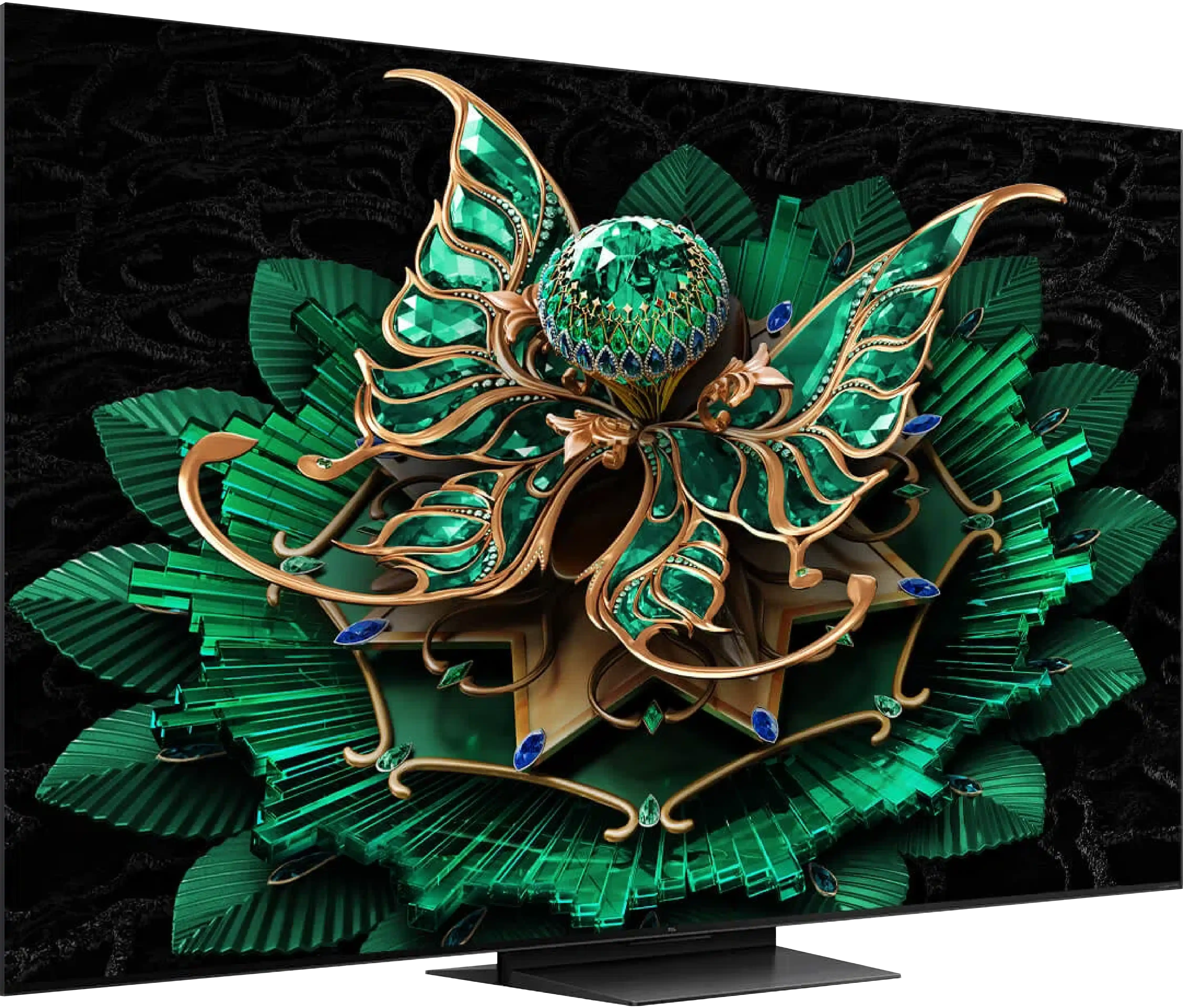
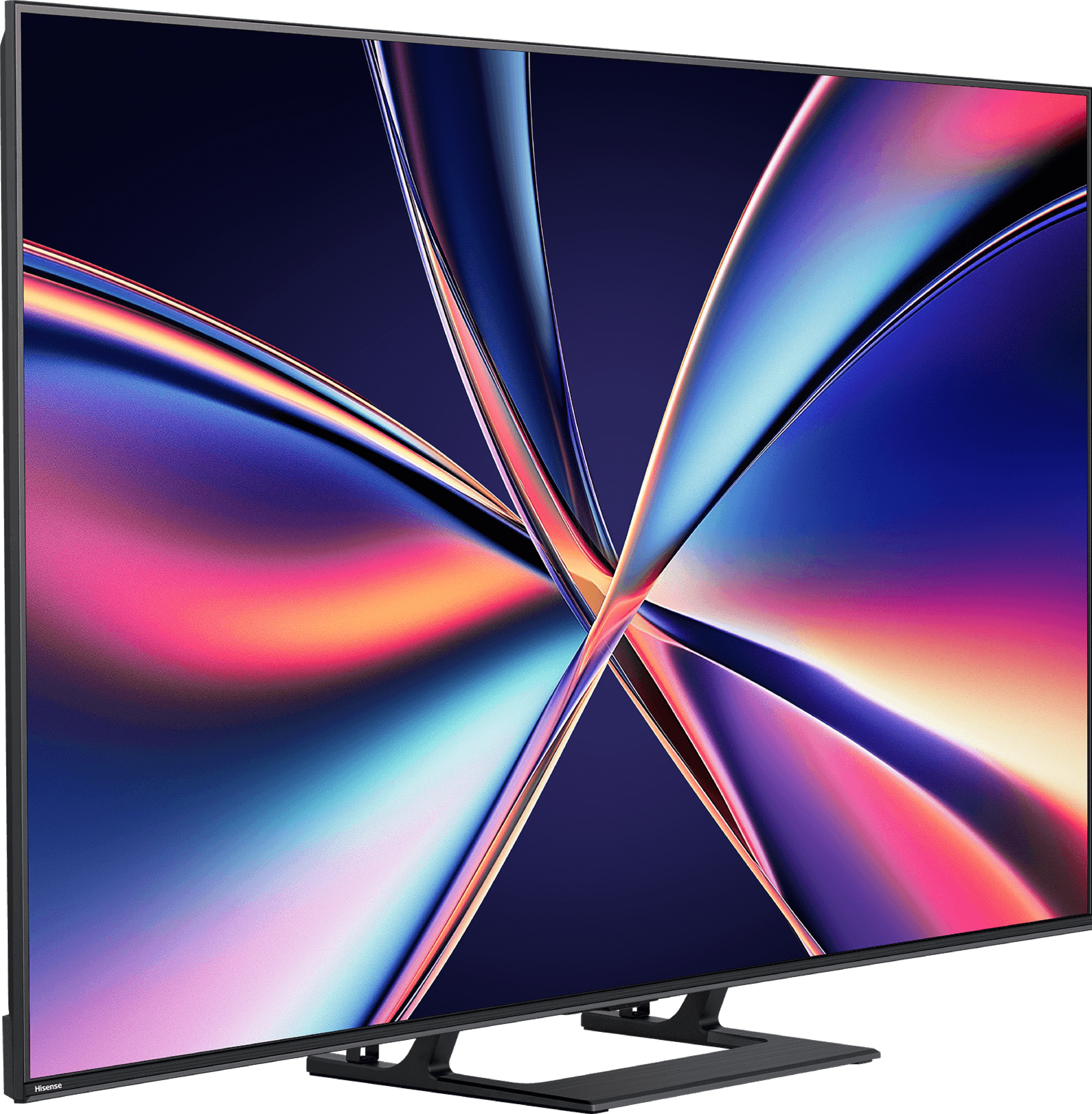
Panel type: LCD VA
Resolution: 3840x2160
System: Google TV
Model year: 2025
Complete the survey to find out the result

Panel type: LCD VA
Resolution: 3840x2160
System: VIDAA
Model year: 2025
Complete the survey to find out the result

Overall rating
7.2
7.2
Movies and series in UHD quality
6.7
6.7
Classic TV, YouTube
6.5
6.8
Sports broadcasts (TV and apps)
6.6
6.5
Gaming on console
8.5
8.0
TV as a computer monitor
8.4
8.6
Watching in bright light
6.1
6.2
Utility functions
7.3
8.9
Apps
9.6
7.7
Sound quality
7.0
7.2
Complete the survey to find out what fits your preferences
Advantages
Very good black - VA panel with a large number of Mini-LED zones
High brightness in HDR - over 1000 nits
Great for gamers - HDMI 2.1, low input lag, VRR, ALLM, etc.
Good motion fluidity - 144Hz panel
Support for multiple HDR formats: HDR10, HDR10+, Dolby Vision
Google TV operating system with access to a huge app base
Pleasant sound from built-in speakers
Great contrast and deep black
Very good fluidity of tonal transitions (close to reference level)
High brightness
Support for 4K 144 Hz and even 240 Hz in Full HD
VRR, ALLM, G-SYNC – a complete package for gamers
Low input lag
Many classic TV features built into the VIDAA system
Disadvantages
Google TV can work with minor lags
No USB recording and PiP features
No support for HGiG (makes HDR setup difficult on consoles)
U7Q
Our verdict
The Hisense E8Q is a television that clearly draws heavily from the U7Q model – and that's a good thing. After all, it is its European version, not another "diet" mutation. Just a few moments with this screen reveal that the E8Q is trying to impress. And in many ways, it really succeeds. Right off the bat – what stands out: the black is deep, the contrast is high, and the brightness exceeds the threshold that we can simply call satisfying. Let's add to that almost perfect smoothness in tonal transitions, and we have an image that looks very mature, especially for this price segment. In gaming? Just as good. It supports VRR, ALLM, 144 Hz in 4K, and even 240 Hz in Full HD – it's hard to find fault here. Well… almost. Because the E8Q has one additional flaw compared to the U7Q – the sound. In our unit, even at moderate volume levels, the back of the casing started to resonate, generating quite unpleasant crackling noises. This might be a flaw in the test sample, but since the U7Q simply performed better – it's worth noting. Especially if you find both models at a similar price. We can confidently state that the E8Q is a television that can boldly compete for the attention of those looking for a quality Mini-LED at a reasonable price. If a good deal comes along, it's definitely worth it – because we get almost the same as with the U7Q. And that means a really solid picture, excellent gaming features, and overall very good equipment that you can stick with for a long time.
TV appearance
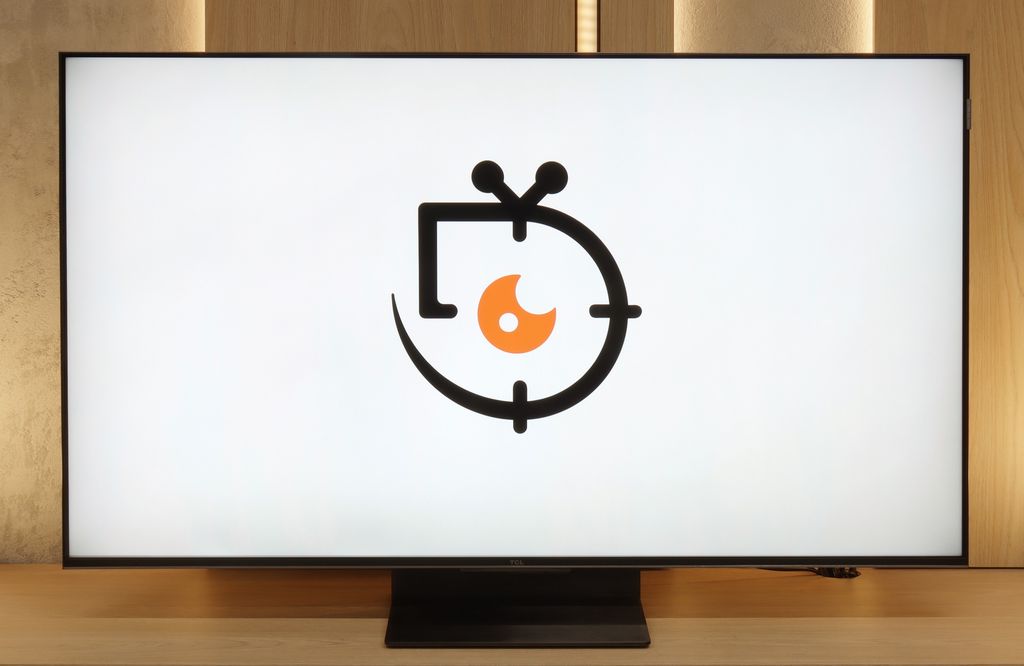
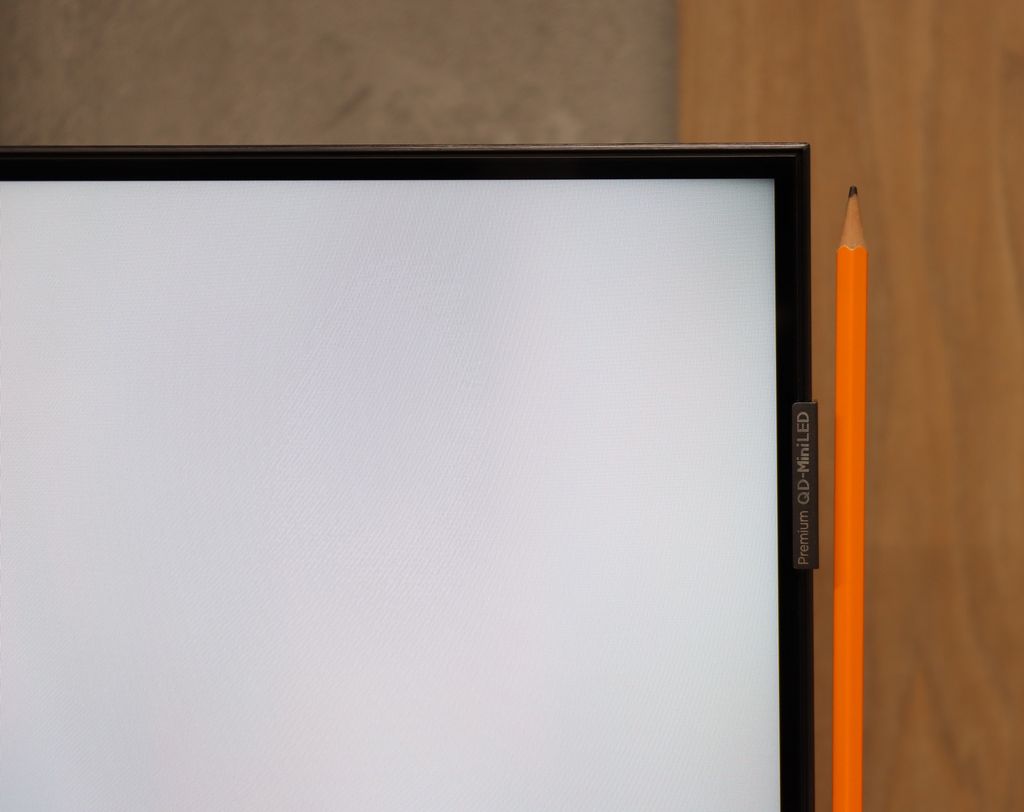
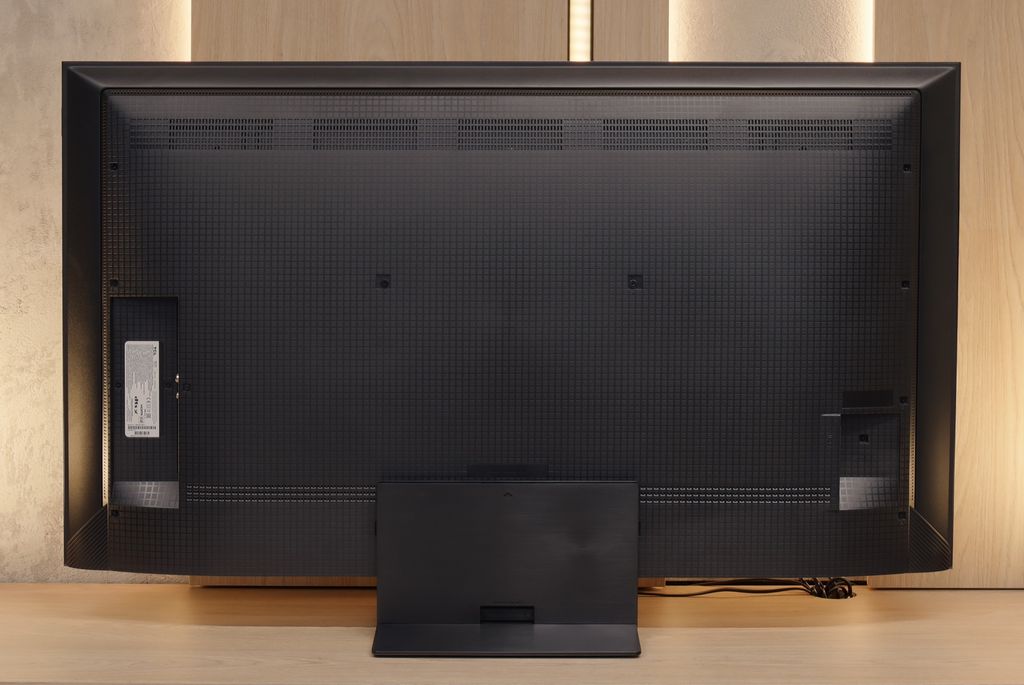
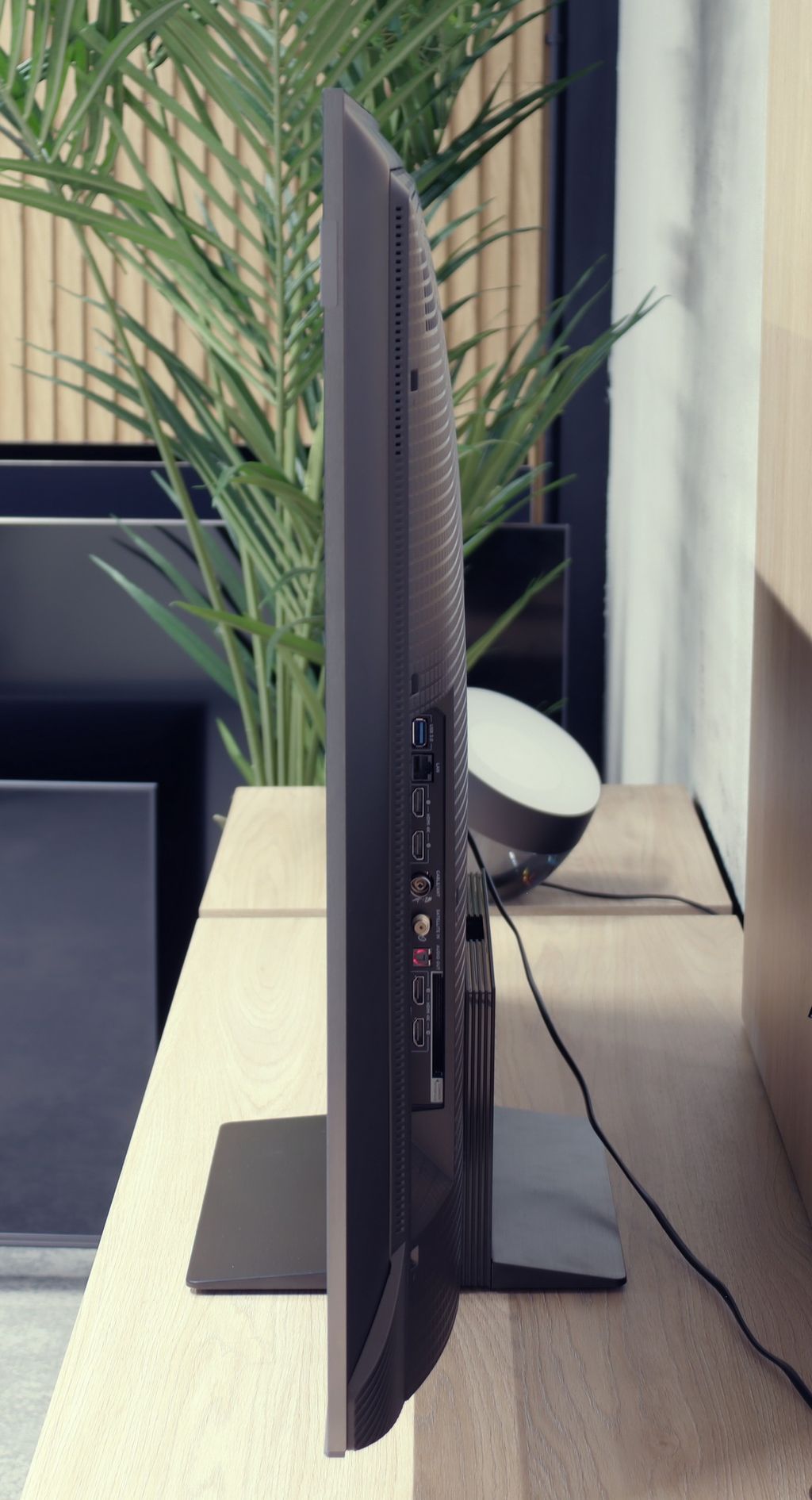
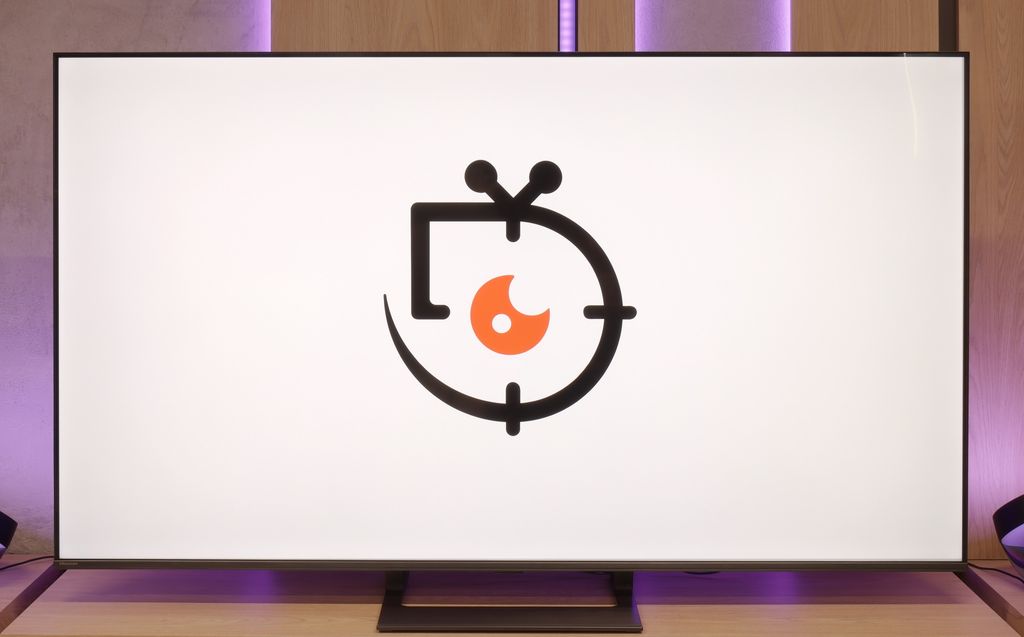
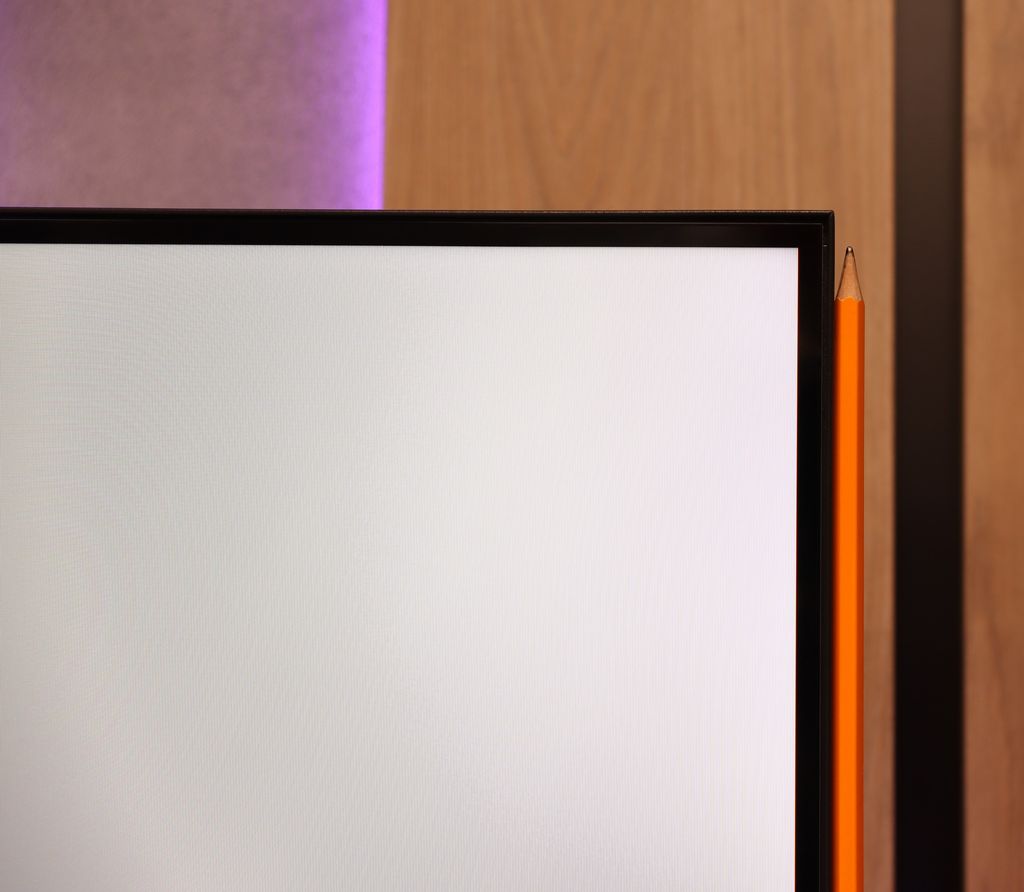
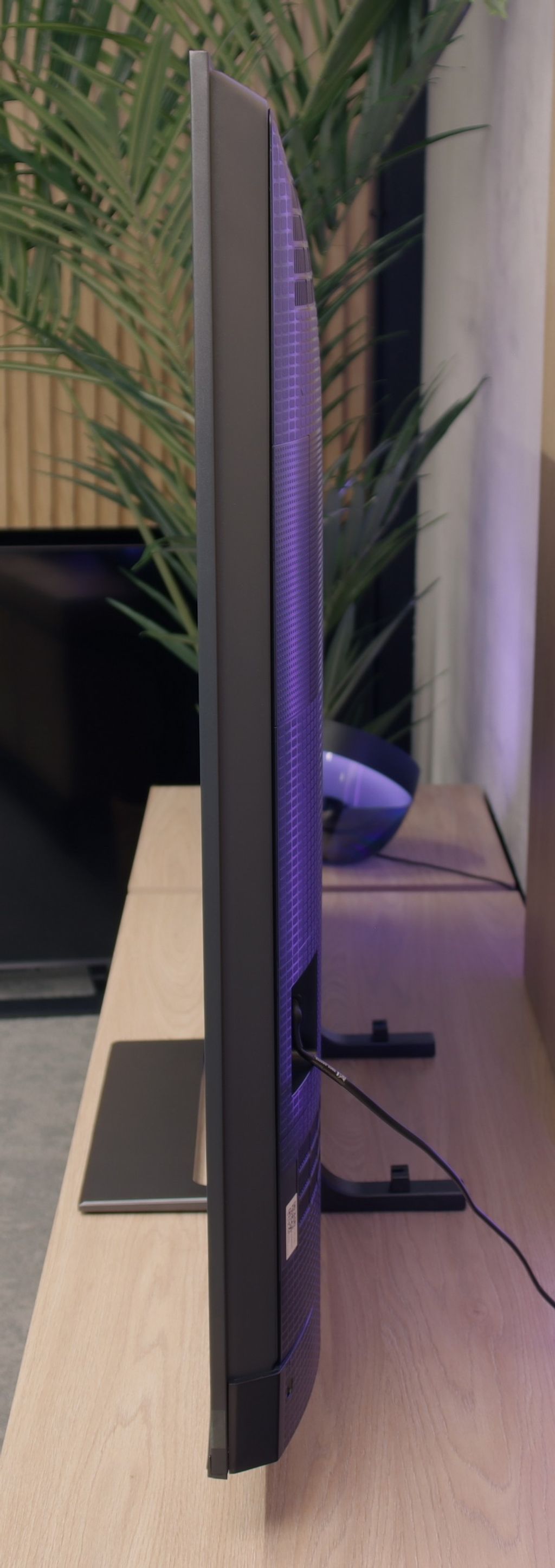
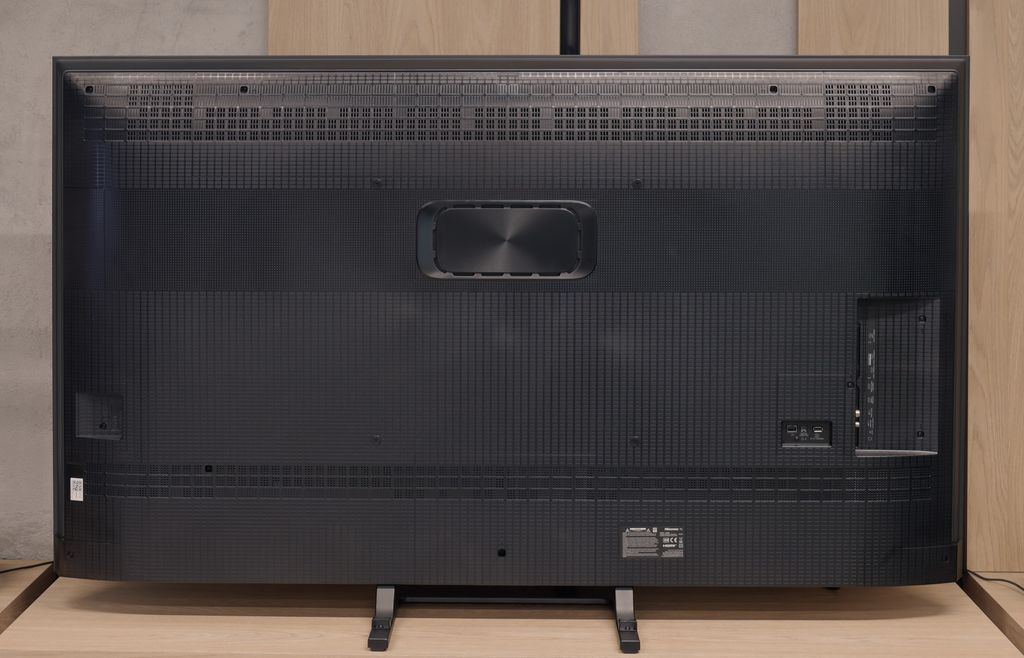
Contrast and black detail
7.1/10
7.6/10
Local dimming function: Yes, number of zones: 336 (14 x 24)
Local dimming function: Yes, number of zones: 220 (10 x 22)
Contrast:

Result
161,000:1

Result
18,750:1

Result
13,150:1

Result
6,300:1

Result
4,200:1

Result
277,000:1

Result
43,700:1

Result
15,750:1

Result
8,850:1

Result
6,350:1
Halo effect and black detail visibility:
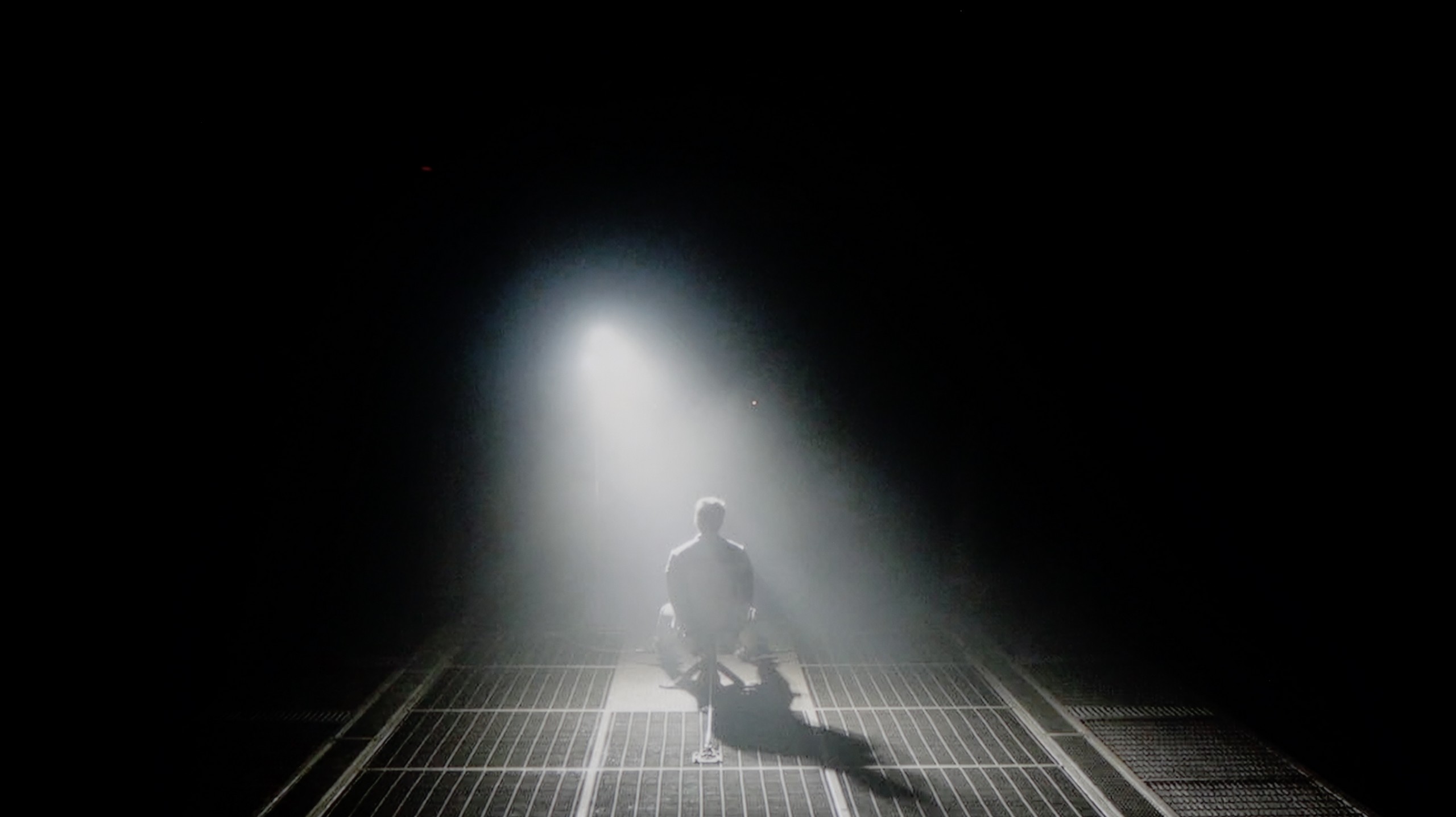
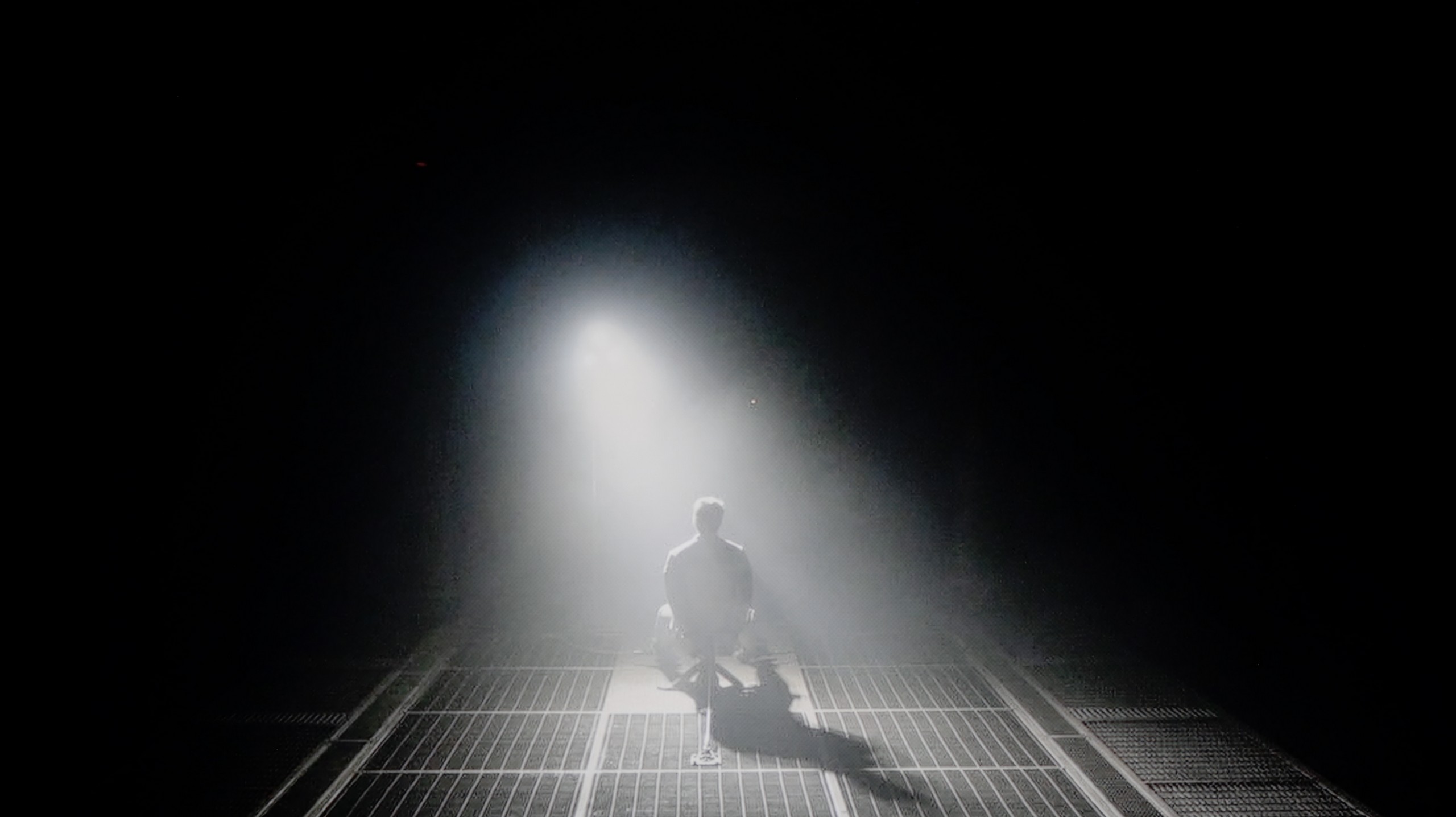
The 50-inch TCL C7K that we tested surprised us right from the start – it's the smallest model in the series, yet it comes equipped with a VA panel with MiniLED backlighting and – attention – as many as 336 dimming zones. For comparison: many significantly larger TVs from higher tiers would be eager to boast such a number. Here we have it in the 50-inch version. Sounds promising, right? So how does this translate into real movie-watching experiences? In the vast majority of tested scenes – very well. The contrast was so high that in measurements it even reached six-digit values, which in practice means very deep blacks and well-separated highlights. In scenes from movies like The Revenant or Oblivion, the effect was impressive, matching the best LCD screens in this class.
However, not everything went perfectly. Despite the impressive number of zones, their management was not always exemplary. In more complex scenes, where there are small light sources or a high level of detail, the TV had issues with the so-called halo effect (a glowing halo around bright objects) or with overly aggressive dimming of the image. In such situations, contrast could either collapse due to overexposing parts of the zones or, conversely – details in bright areas disappeared because the zones suppressed the light too much. Nevertheless, it's worth emphasizing that in the vast majority of scenes, the contrast was more than satisfactory. And considering the size of the TV and its price, the final effect will satisfy not just average users.
Similarly to the U7Q, the E8Q model uses a VA panel and Mini-LED backlighting. The number of dimming zones also remains at a very similar level – in the 65-inch variant we tested, we counted 220 zones, which is exactly the same as in the U7Q. On paper, this looks really good for this price segment, but even better – in practice. The contrast is high, and black can be really deep. In many scenes, the lights are clearly separated, and the image gains in spaciousness. This is one of those cases where Mini-LED shows it can approach the quality of OLEDs – provided that we are aware of the limitations we need to consider. In very difficult scenes, there may be slight lightening or minor halo effects around bright objects, but these are phenomena typical of this technology and are not very noticeable. Ultimately – the contrast and blacks in the E8Q are really solid, almost identical to those in the U7Q model. It’s hard to find fault with this, especially when we look at the price of the television.
HDR effect quality
5.4/10
4.5/10
Luminance measurements in HDR:

Result
1051 nit

Result
185 nit

Result
454 nit

Result
200 nit

Result
836 nit

Result
531 nit

Result
148 nit

Result
320 nit

Result
100 nit

Result
625 nit
Scene from the movie “Pan” (about 2800 nits)


Scene from the movie “Billy Lynn” (about 1100 nits)
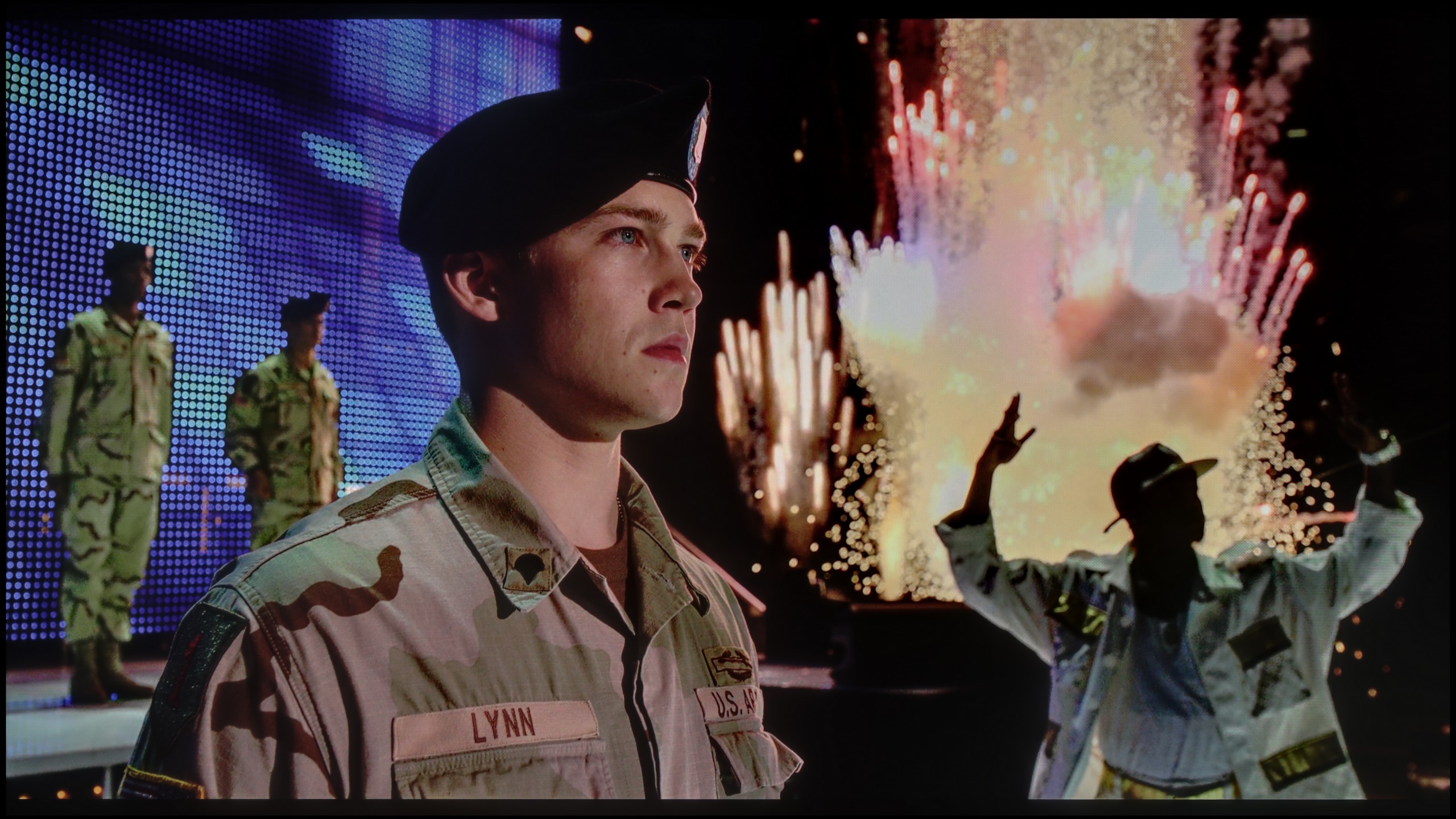

Static HDR10


Dynamic: Dolby Vision
Dynamic: Dolby Vision


HDR luminance chart:
Hisense E8Q
HDR luminance
TCL C7K / QM7K 50"
HDR luminance
TCL C7K is one of the brightest MiniLED televisions in its price range. Under the best test conditions, the screen was able to achieve over 1200 nits, resulting in impressive, and at times blindingly bright scenes. And most importantly – this is not just a theoretical measurement. In practice, the brightest parts of movies can shine with true cinematic grandeur. Home HDR cinema fans should be truly pleased.
The impression is especially great in scenes with large areas of brightness – white skies, explosions, sun reflections, or magical sunsets can surprise with the intensity of light that rarely appears in this price range.
However, things get a bit worse when more challenging scenarios appear on the screen, which have been described in terms of contrast – meaning images full of details, with small bright elements against a dark background. In such cases, the C7K often chooses to retain black at the expense of brightness. An example? Scenes from the movies Sicario 2 or Life of Pi, where small light sources (like a distant lantern) can be less visible, and details in the lights are simply dimmed or blend into the background.
For many viewers, this may be an acceptable compromise – as we achieve deep blacks and pleasant image texture. Nevertheless, it is worth being aware that the visibility of small details in bright areas is not the strongest suit of this model. It is simply a technological limitation that still exists – even with over 300 zones.
Since the E8Q is a twin of the U7Q, it’s no surprise that the quality of the HDR effect is almost identical. On paper, it looks promising – a peak brightness of 800 nits can impress in many scenes. Fragments like the flashes of light in “The Meg” or shots of the sun in “Life of Pi” can indeed evoke a “wow” effect. But the longer we watch, the more we notice the limitations. The problem arises when small, bright details are supposed to be displayed on a dark background. In such situations, the dimming algorithms try to preserve contrast but end up dimming what should shine the brightest. Instead of dazzling details, we get almost invisible points of light. This is typical for Mini-LED in this price segment and is not surprising – but it’s worth knowing that the HDR effect won't always be fully preserved. Fortunately, the color reproduction offers reasons to be satisfied. A coverage of the DCI-P3 color gamut at around 94% is a very good result, and the applied quantum dot layer (more specifically, PFS) does its job – colors are saturated and vibrant, especially with 4K content.
Factory color reproduction
6/10
6.5/10
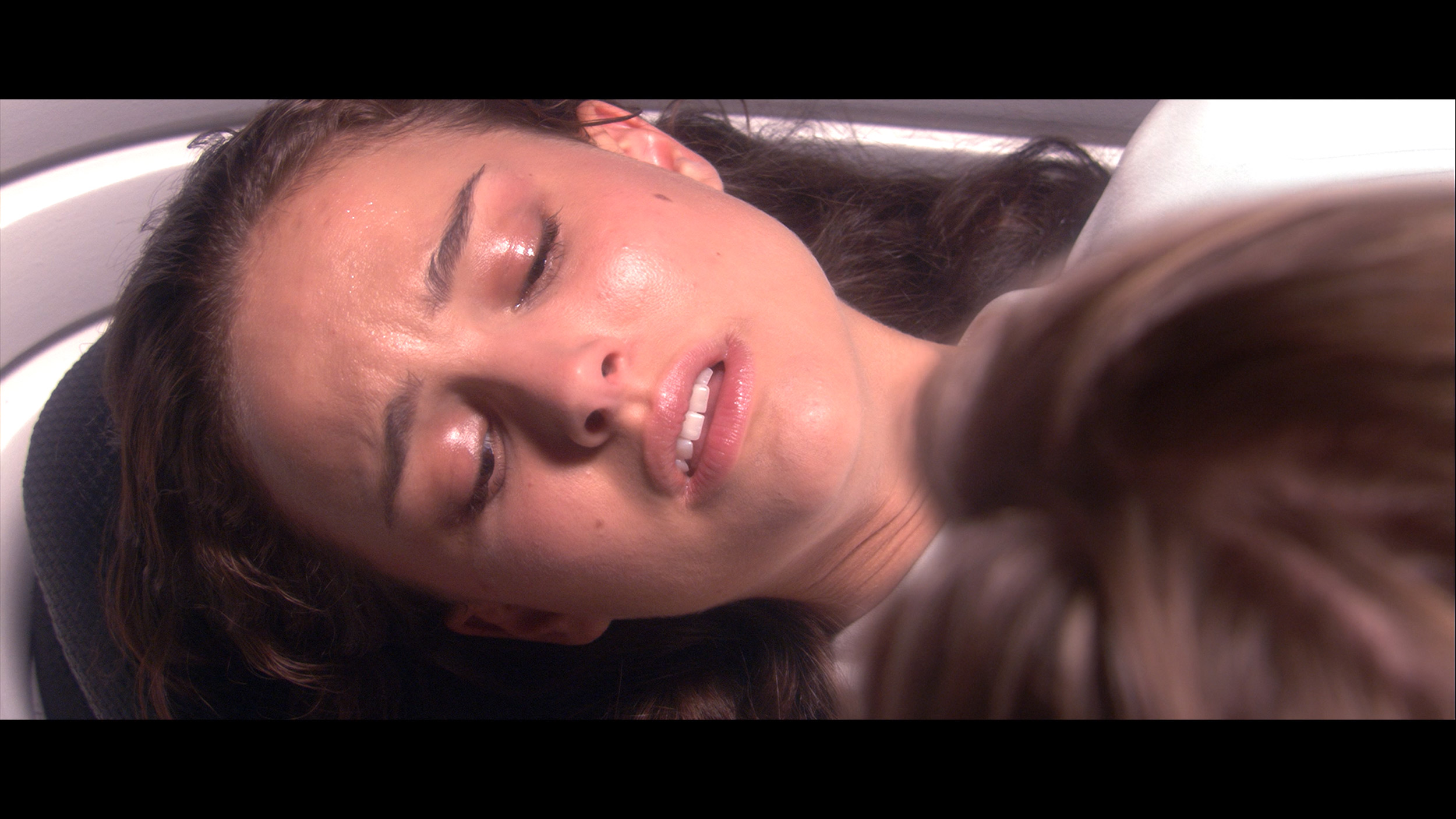
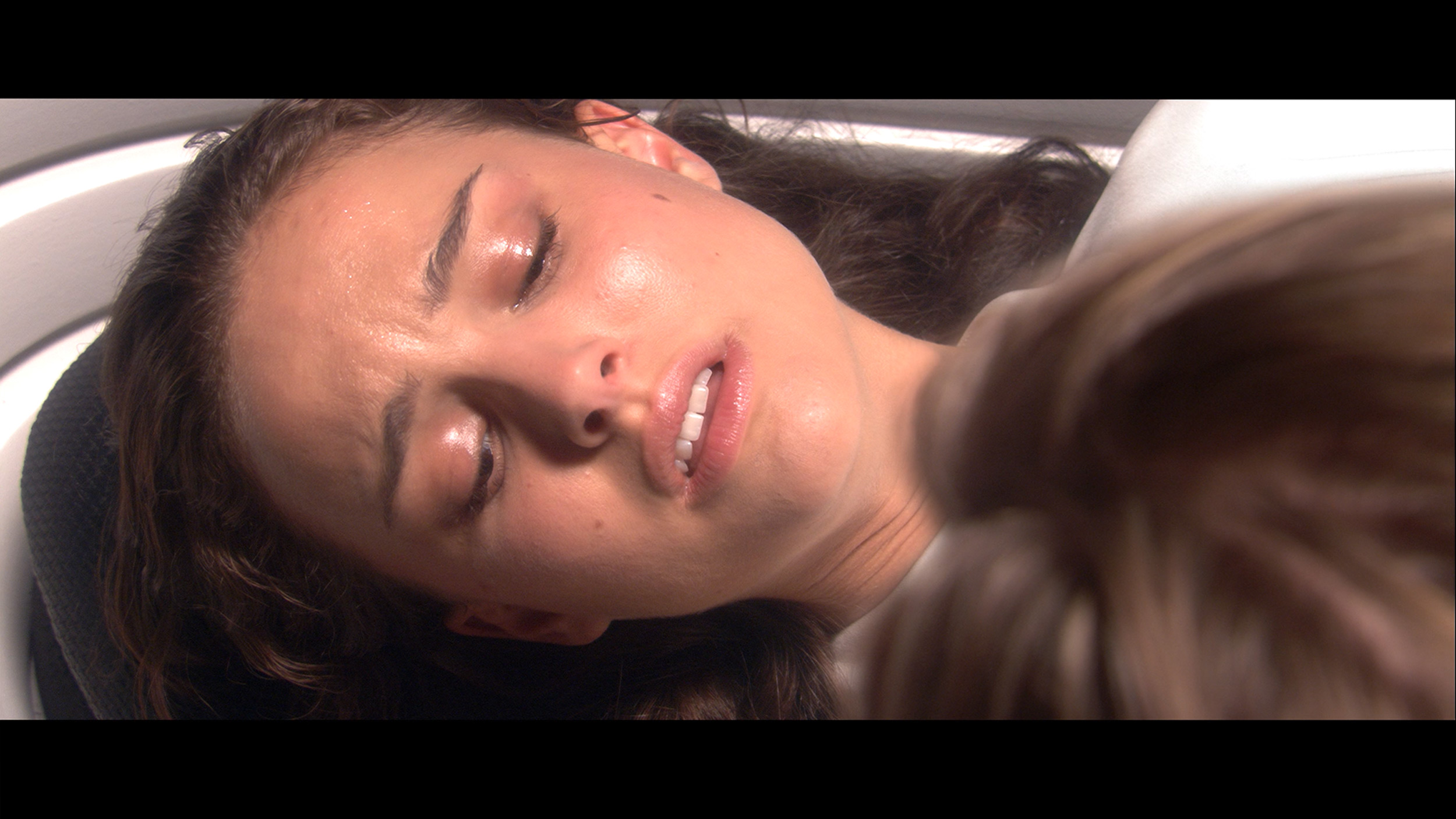
Factory Mode
After calibration


Factory Mode
After calibration
A new feature in TCL televisions for 2025 is the long-awaited Filmmaker mode, which until now could be found in most competitive brands. This is great news because this mode is considered the truest to the original vision of the creators and is often recommended by enthusiasts of good image quality. Unfortunately – as is often the case – the mere presence of this feature does not guarantee perfection. The Filmmaker mode in the TCL C7K is not free of flaws. One could point out the incorrect white balance, particularly the slight dominance of blue, which caused cool, somewhat grayish skin tones. But that was not the biggest problem. The main complaint was excessive brightness exposure, which is clearly visible on the gamma and EOTF graphs. The image was simply too bright, at times even blown out, which affected not only the plasticity of the scenes but also the overall viewing experience. Some details simply got lost, and the whole image looked as if someone had overdone it with the brightness slider. As always – we decided to see what could be squeezed out of it after calibration. And this is where things got really interesting...
Testing the Hisense E8Q in Filmmaker mode, we were hoping for a neutral image close to the director's vision. Unfortunately - although on paper it doesn't look bad (the color reproduction errors are not significant), in practice the image feels somewhat unnatural. The reason? Too strong an increase in blue and a lack of red in the white balance. The effect? The scenes look cool, and the white appears slightly bluish. Alongside the U7Q model, we also noticed a specific approach to brightness management here. The brightness reproduction curve for HDR content (EOTF) shows that the TV can significantly dim small, bright elements of the screen to maintain contrast - but sometimes it goes too far. On the other hand, it can excessively brighten larger, very bright parts, which disrupts tonal balance. This is a compromise that may not suit everyone – especially if you want an as faithful image as possible right out of the box.
Color reproduction after calibration
7.5/10
7.4/10



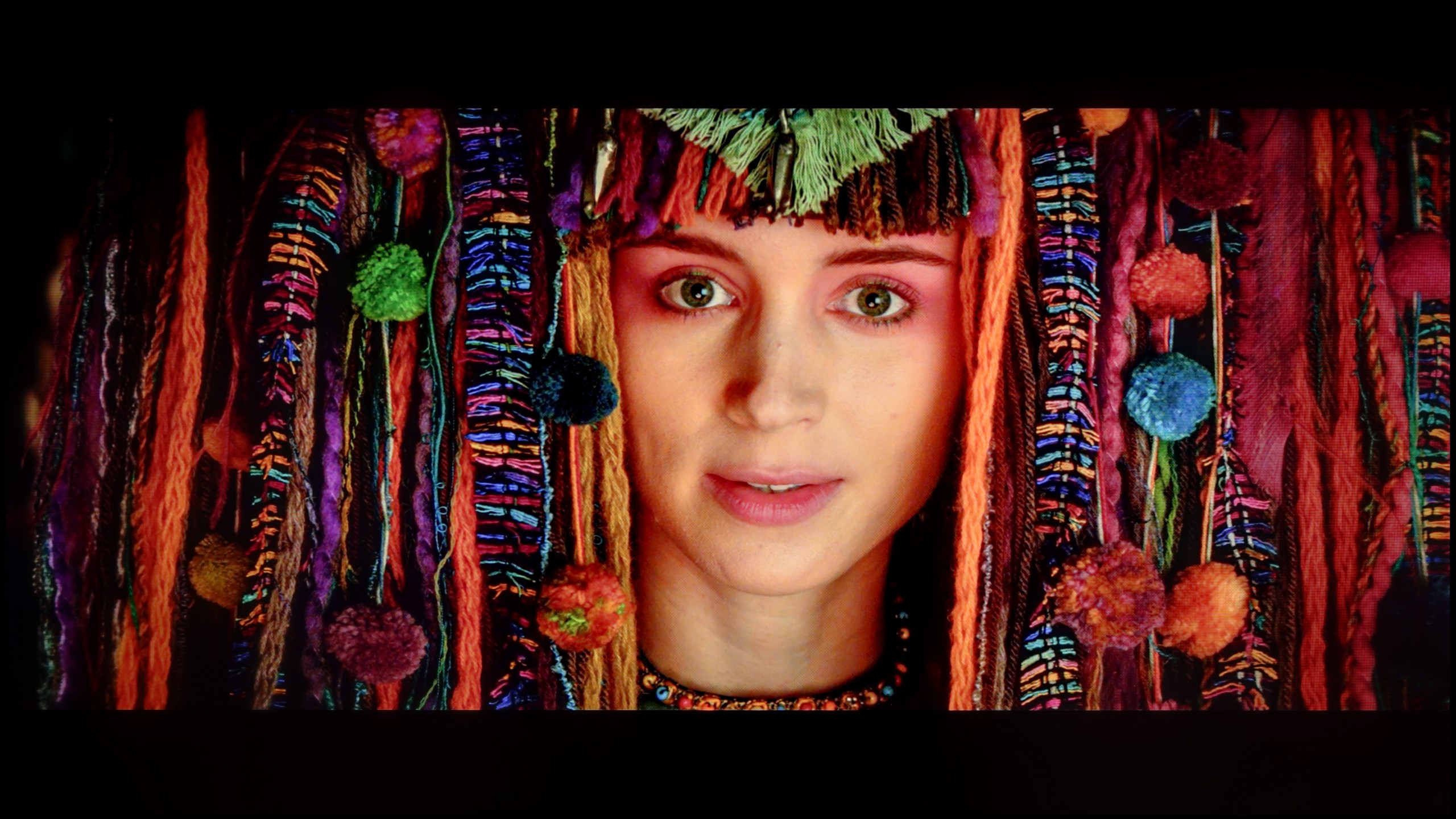
After calibration, the TCL C7K showed itself in a really good light, especially when it comes to SDR content. We managed to fine-tune the white balance, color gamut, and brightness characteristics so precisely that color errors on the ColorChecker palette dropped below a value of 2. For the uninitiated – this is an almost perfect result, meaning that the image is very close to what the creators intended. Unfortunately, it was less impressive with 4K HDR content. Although we managed to slightly calm the white balance and correct its earlier errors, it is still evident that the TV has certain "MiniLED traits," especially in managing brightness. When we checked how the C7K performed with the EOTF curve on real movie scenes rather than just synthetic test patterns, it turned out that the screen still has a tendency to slightly brighten the entire image. This affects the overall experience – the black loses some depth, and the image becomes less contrasty than it should be. Despite these minor shortcomings in HDR content, the overall reception of materials – especially in SDR – is really very good. After calibration, the C7K can display an image that can successfully compete with much more expensive models. Good color tuning, natural skin tones, and pleasant brightness make movie sessions and everyday content viewing more than satisfactory.
The calibration of the Movie mode brought really good results, especially regarding SDR content. The white balance was successfully adjusted, which gave the image a natural look – it appeared almost reference-level. The colors were well-saturated, and the overall perception of the content improved significantly. Unfortunately, when we moved to HDR materials, the well-known problems from the U7Q model returned. The TV still tends to “do things its own way,” which is evident from the analysis of the EOTF brightness characteristic – despite calibration, the E8Q still dimmed small details in the shadows, while the bright areas of the screen could sometimes be excessively boosted. In practice, this means that in darker scenes, some of the tiniest details could simply disappear. Although it must be admitted that the entire calibration process brought a lot of good, not everything can be circumvented – even with the use of professional tools. The E8Q can impress with its picture, but in HDR content, its design limitations become noticeable, and it is worth keeping this in mind.
Smoothness of tonal transitions
8.6/10
9.9/10
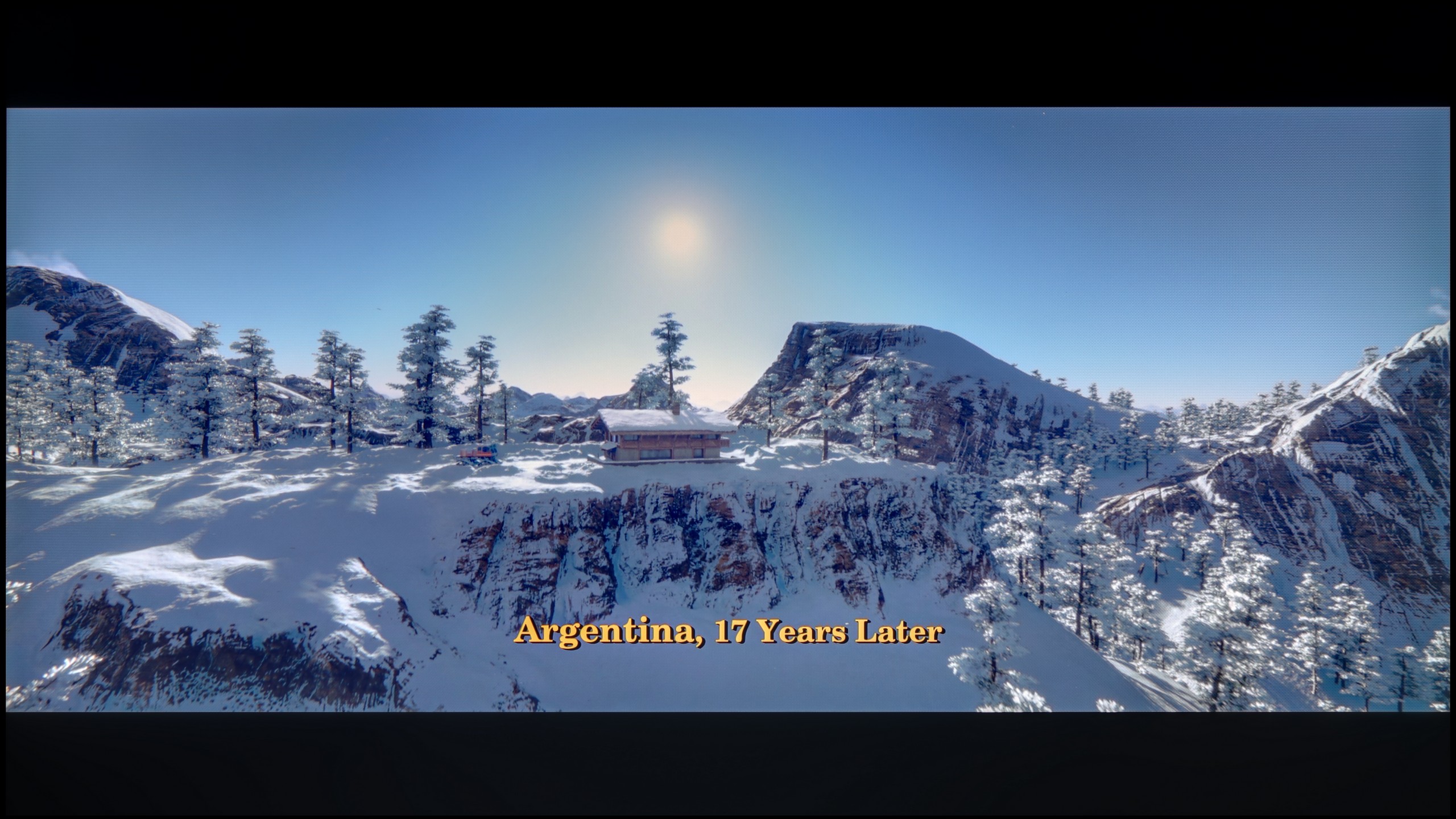
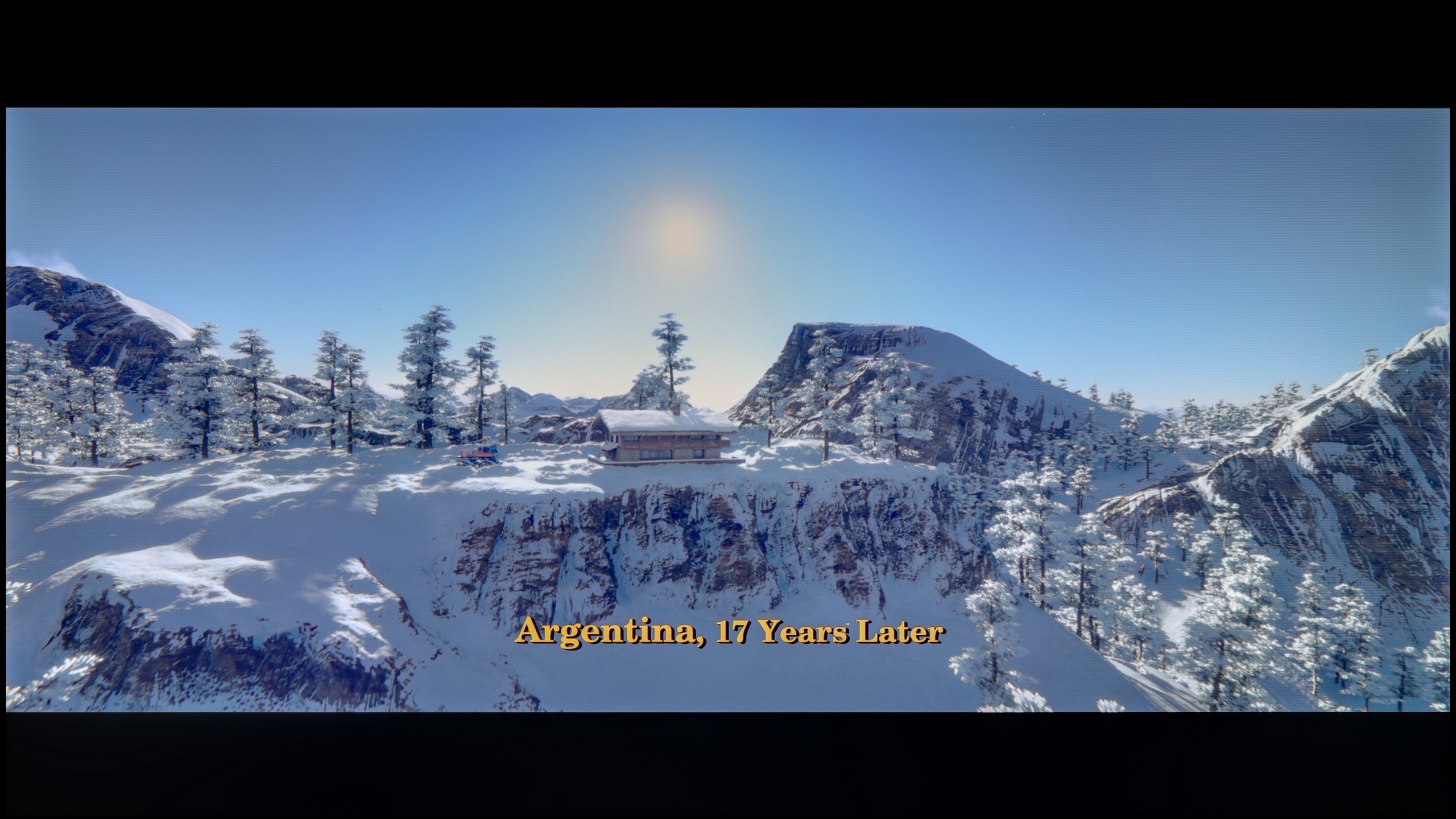


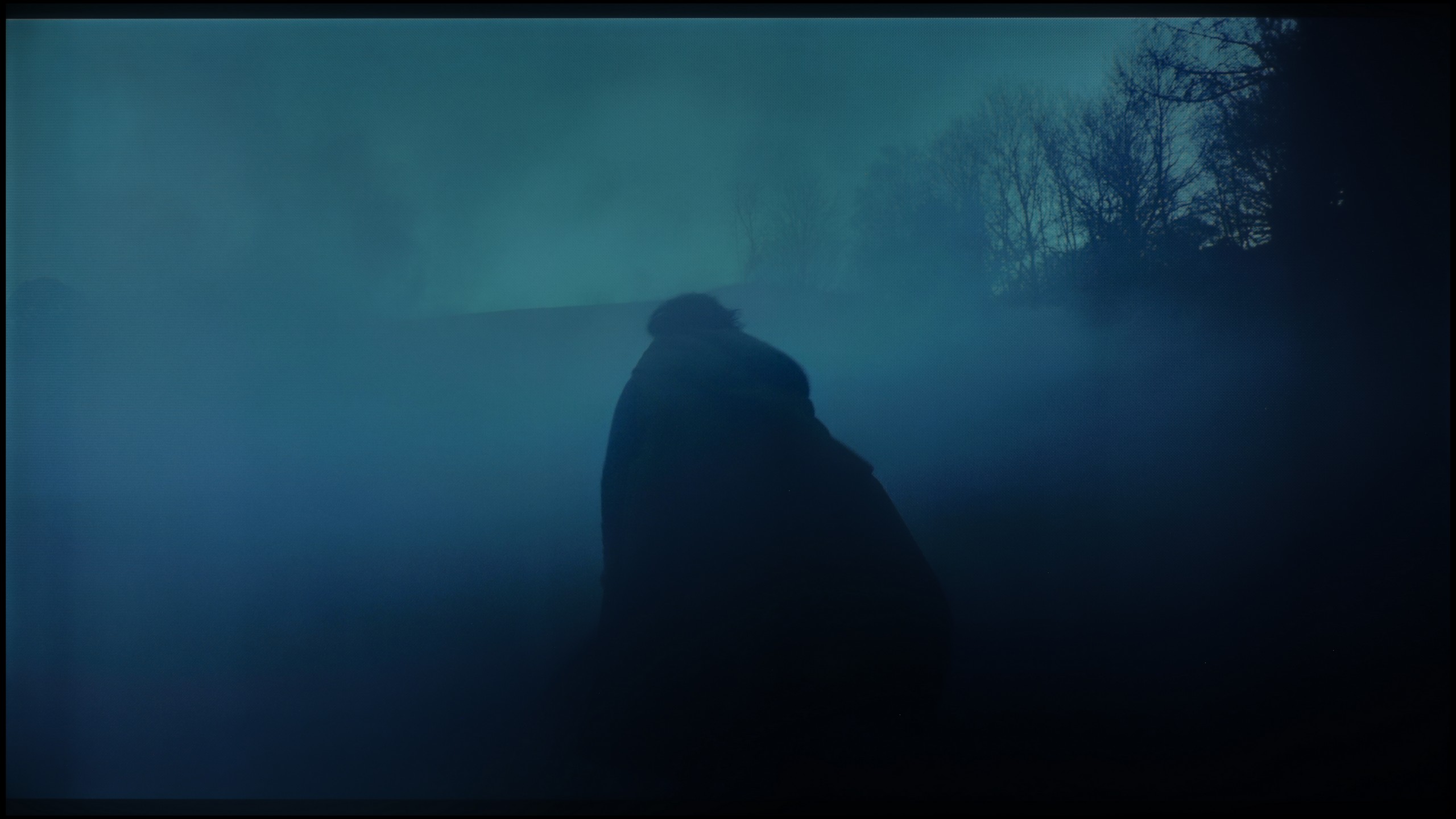
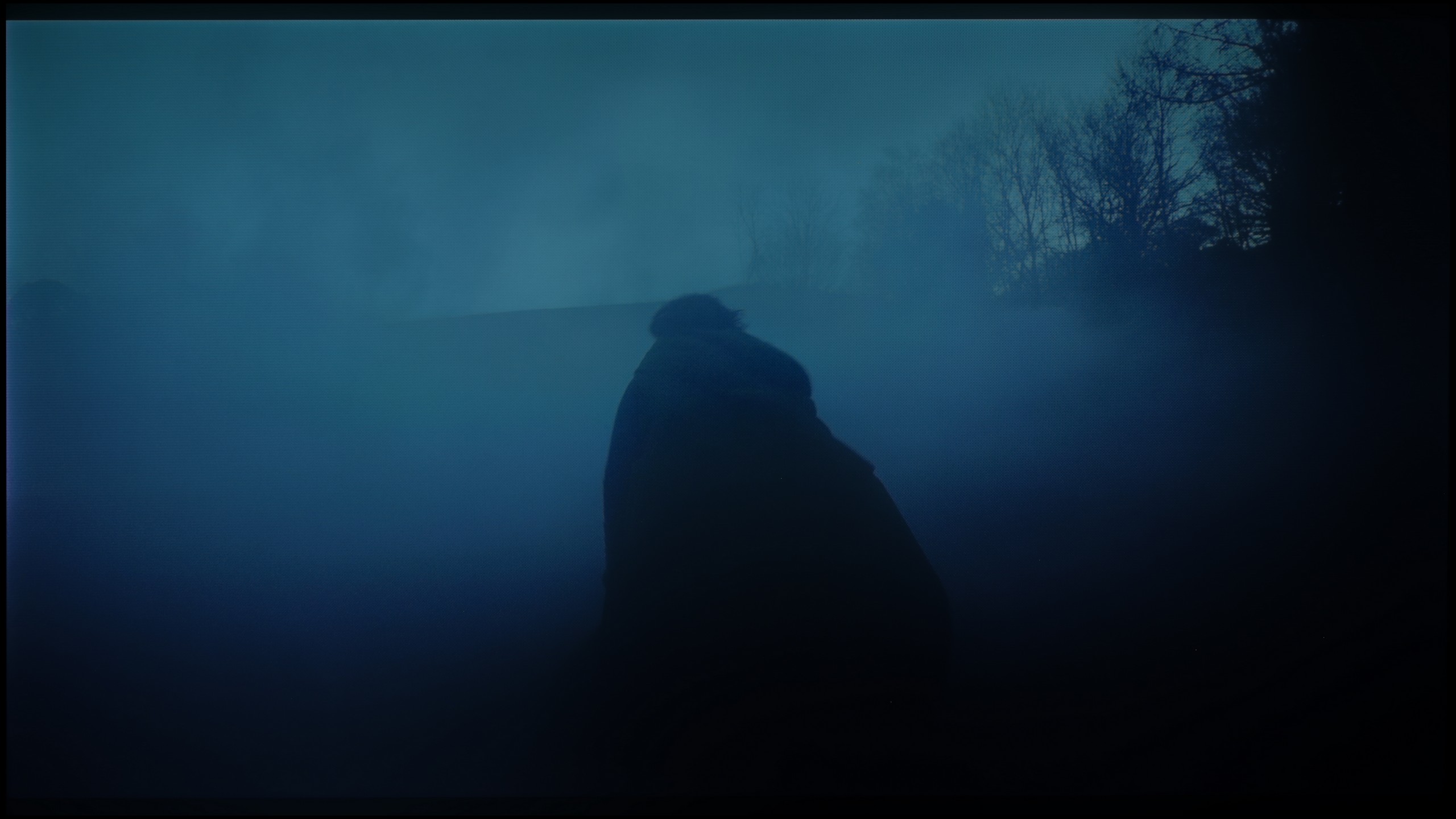

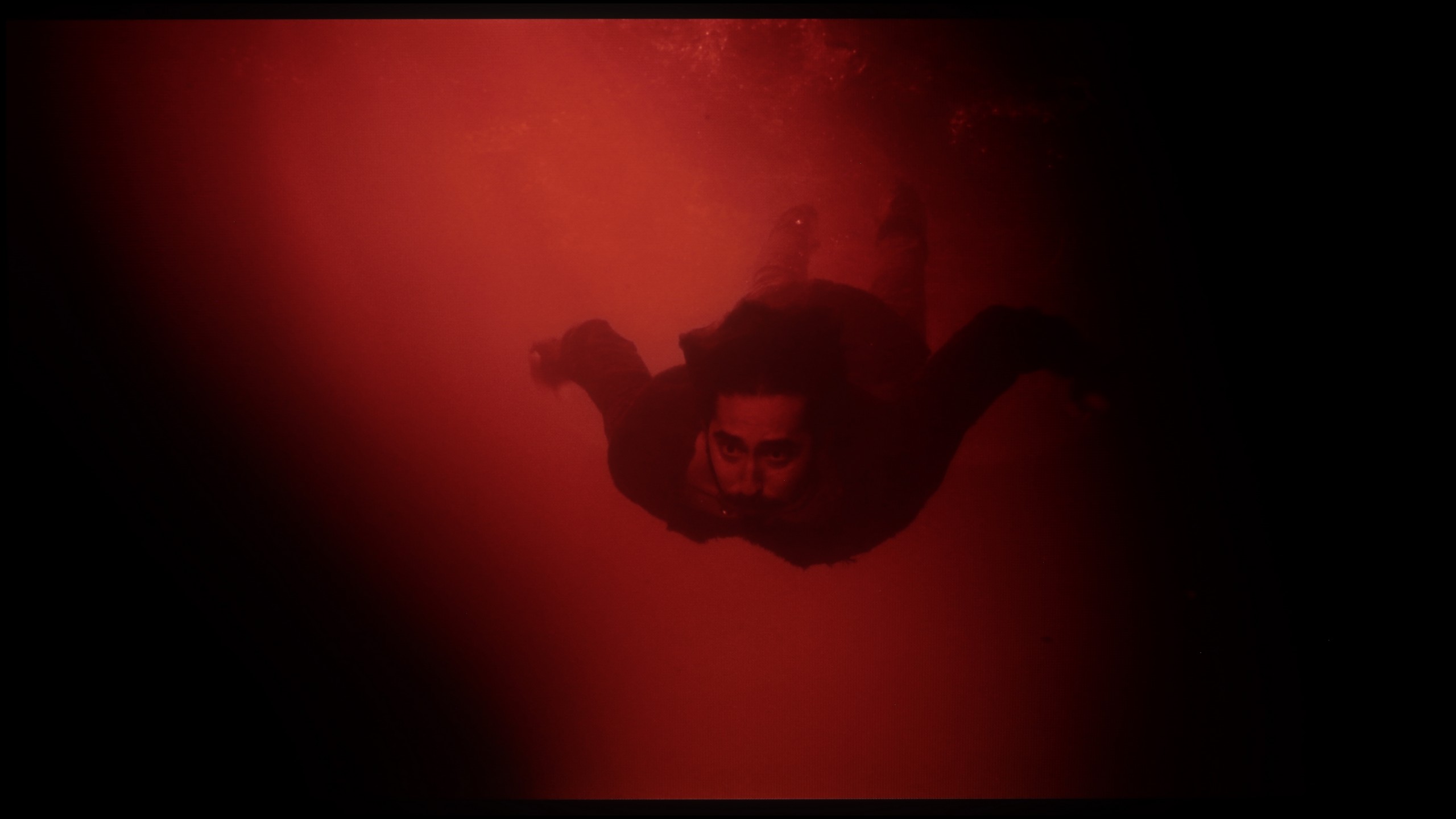




The TCL C7K handles color gradation very well – in most tested scenes, tonal transitions were smooth, and colors blended together without visible contours or artificial “blot” effects. In everyday use, it’s hard to find fault with it – the image looks natural, without irritating transitions or digital artifacts. Some limitations only appear in very dark tones – especially in a heavily muted gray palette, where the TV may struggle to reproduce ideal gradation. But this is absolutely understandable, because even many significantly more expensive models in this range simply give up. Fortunately, these situations are rare and do not significantly affect the overall perception.
In this category, the Hisense E8Q truly shows its class. The transitions between colors are very smooth, with no "banding" or clear boundaries between tones. The image looks natural, and the color gradient is exceptionally well-executed – even in more difficult scenes. If there are any minor imperfections, they are subtle enough that they don't stand out. It's hard to find fault here – it looks almost exemplary.
Image scaling and smoothness of tonal transitions
5.5/10
6/10
Smooth transition function
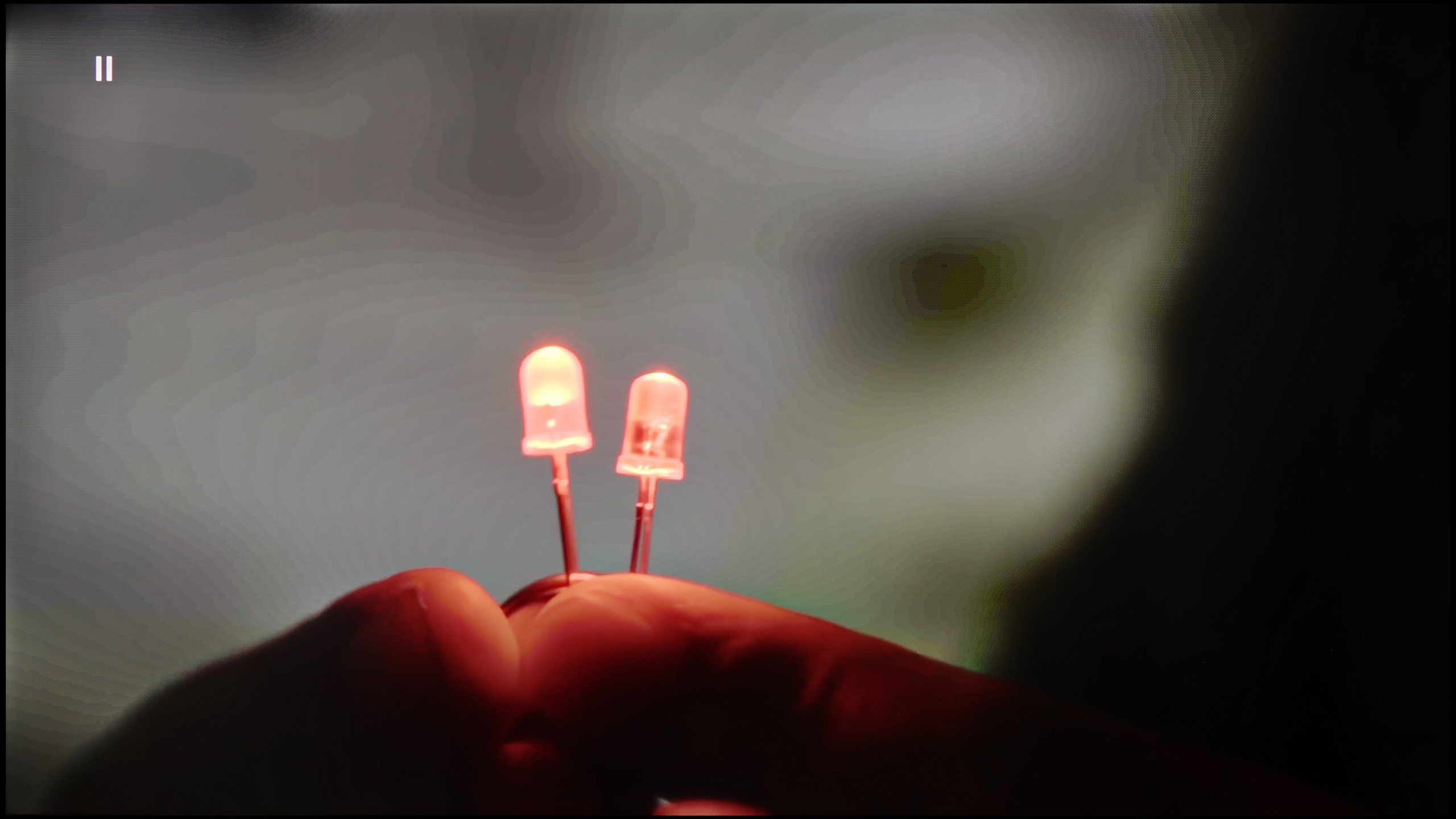
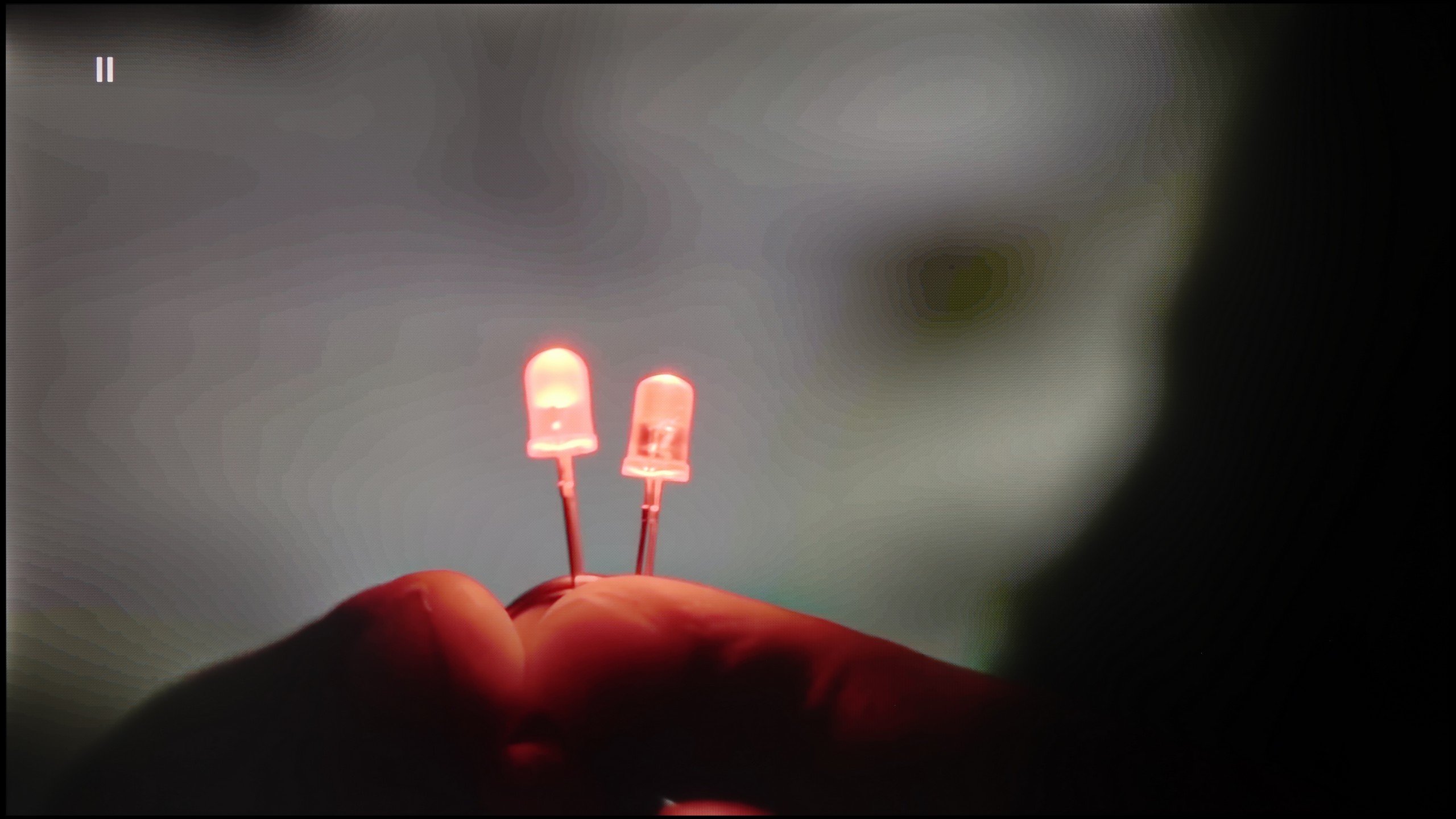
Image without overscan on the SD signal


The TCL C7K features a function that, according to the manufacturer, is supposed to smooth out unwanted color transitions – something like a rescue for less successful tonal shifts. It's called "Gradual Smoothing" and... well, it sounds ambitious, but in practice, it works very poorly. Regardless of whether we set it to low or high, the difference is minimal. What's worse – the function can remove elements from the image that should remain. Fortunately, film grain remains untouched, so at least it doesn't smooth everything indiscriminately, but still – it's better to just turn this option off.
As for scaling lower-resolution content, it's already better. SD and HD materials look quite decent, though sometimes we had the impression that the image loses sharpness and becomes too soft – as if something took away its clarity. Fortunately, at very low sources (e.g., 576p), there was no overscan effect, meaning the image was not artificially cropped – everything fit on the screen as it should.
In the case of older materials with lower quality, a gentle smoothing of tonal transitions is often useful. The Hisense E8Q, like the U7Q, has the "Smooth and Gradient Picture" feature, but unfortunately, its effectiveness leaves much to be desired. The “Low” setting is almost imperceptible in operation, while higher settings simply blur details instead of improving transitions. The good news is that the feature does not compromise the film grain, which allows it to maintain the image structure. On the plus side, the scaling is commendable. The television can fairly sensibly transform older content to a higher resolution—without artificially emphasizing contours or excessive sharpening. Though it does not match the best models in this category, it performs quite well for its class.
Blur and motion smoothness
8.1/10
7.5/10
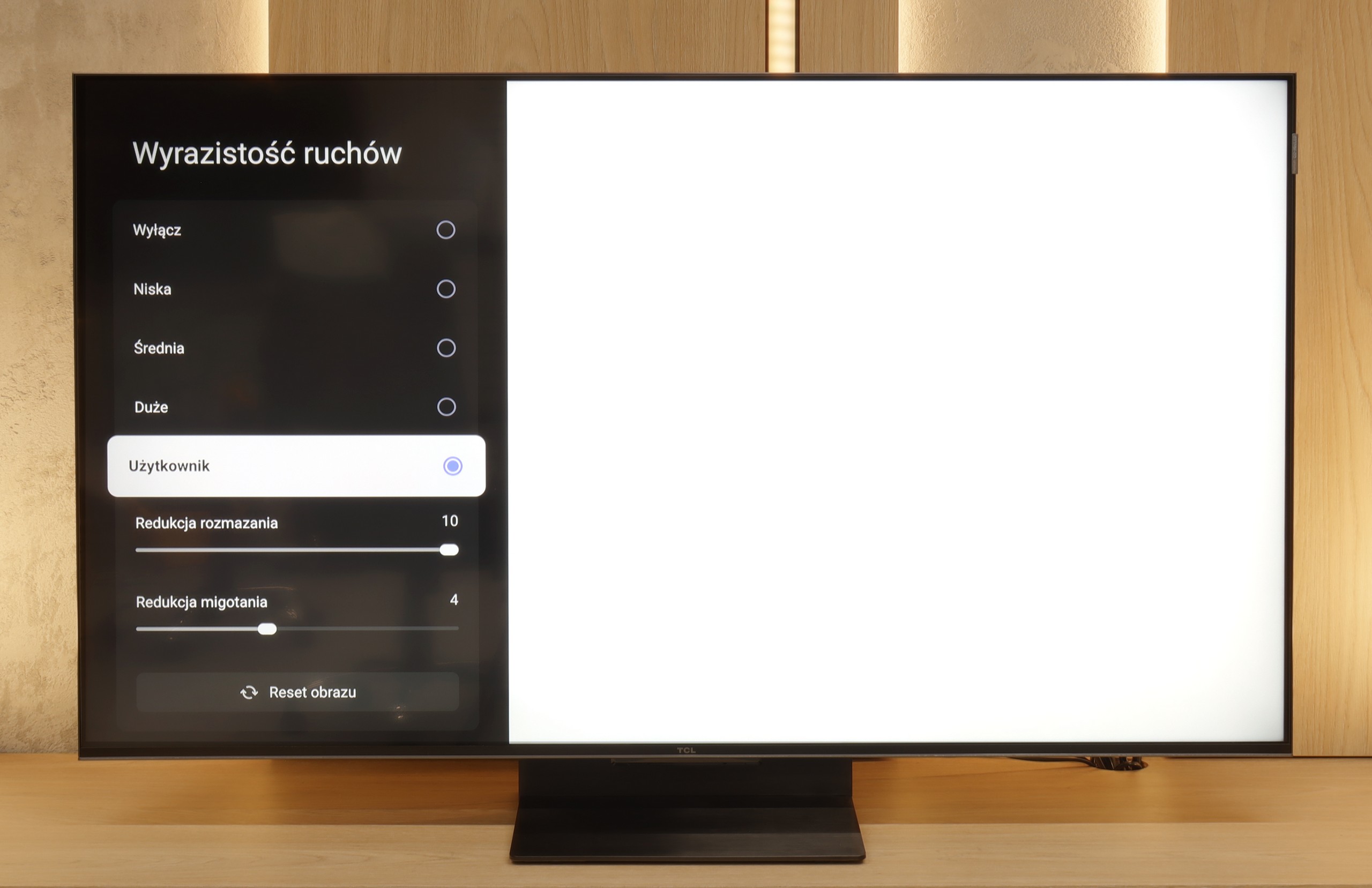

Blur (native resolution, maximum refresh rate):


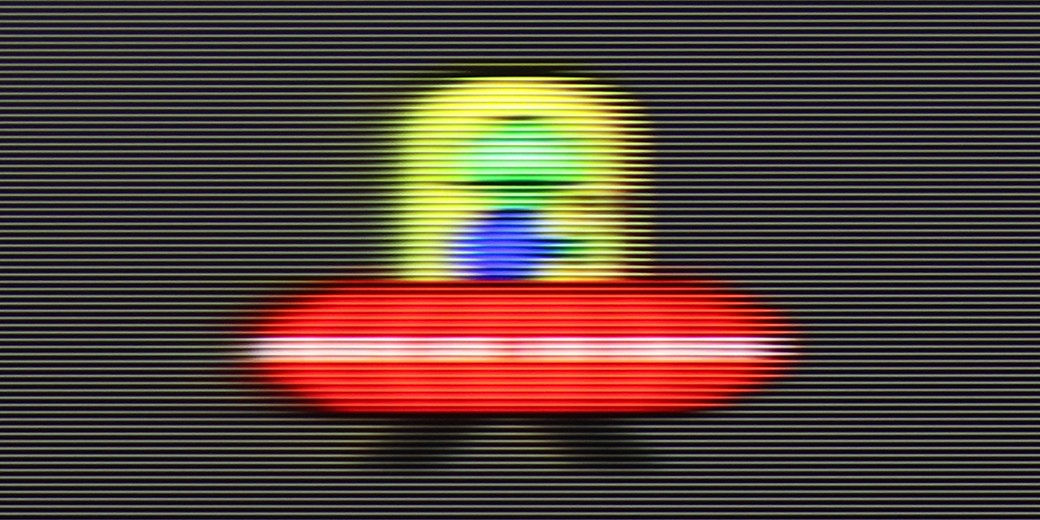



Blur (BFI function enabled):






Smużenie (4K 144Hz):



Smużenie (4K 120Hz):
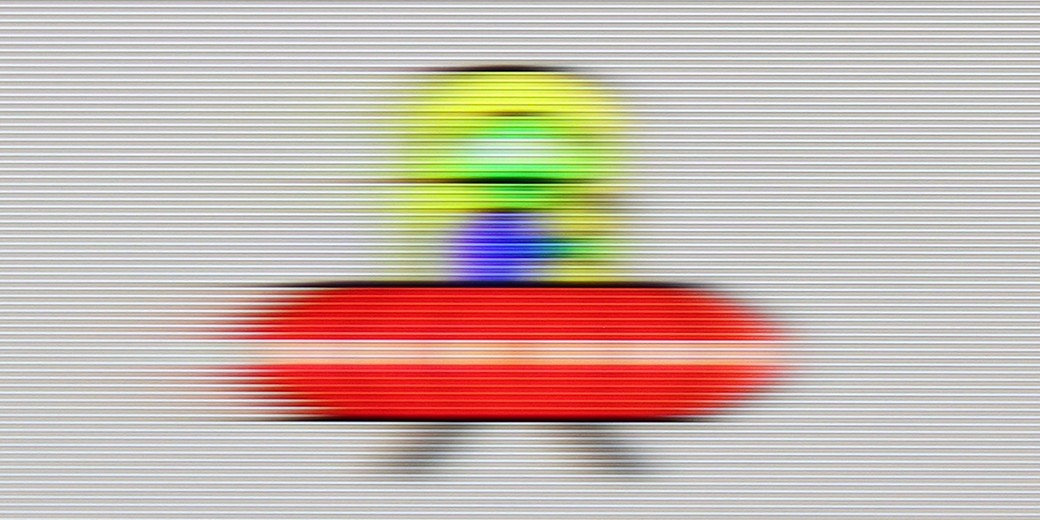

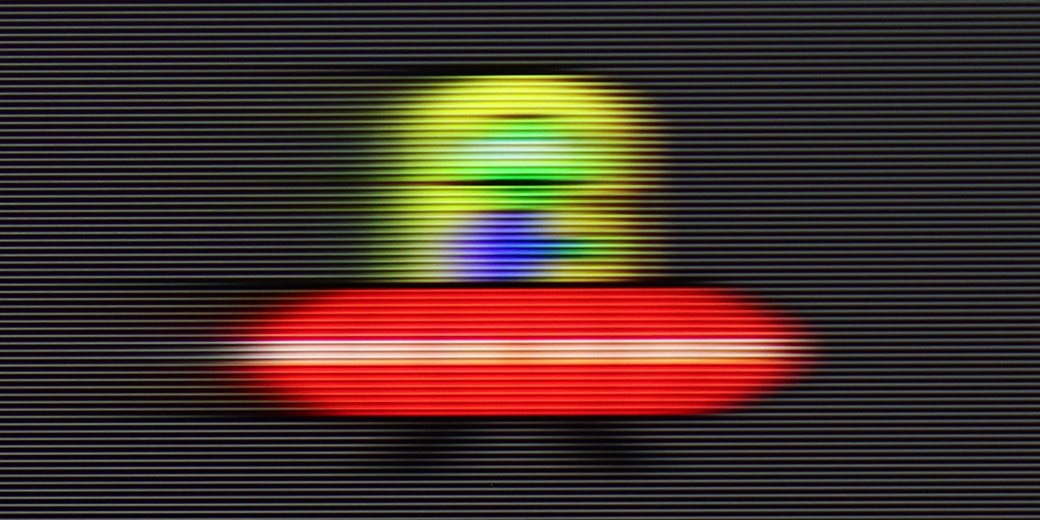
TCL C7K handles motion smoothness really very well. The matrix used in it offers a refresh rate of 144 Hz, which already suggests that this TV is something more than just an ordinary "60 Hz" panel. Moreover – if we connect the C7K to a computer and set the resolution to Full HD. But we will write more about this in the paragraph about gamers and PC cooperation. Returning to everyday use – both sports and movies look very good here. Thanks to the fast panel and well-functioning motion smoother, the C7K is perfect for watching matches, but also for movie screenings. In the menu, we will find two sliders – blur reduction and flicker reduction – which allow us to adjust the motion smoothness effect to our own preferences. At lower settings, we get a more cinematic effect, with slight frame motion. At higher settings – the image becomes more theatrical, smooth to the point of exaggeration. Everyone can set it to their liking.
Like the U7Q, the E8Q model is a fast television designed for dynamic content. It supports 144 Hz refresh rates in 4K resolution, and if for some reason someone is still gaming in Full HD, it can achieve even 240 Hz. This is a significant advantage, especially for PC users looking for maximum fluidity. In everyday use, the television performs very well. The "Ultra Motion Smoothness" mode provides us with two sliders, allowing for personalized image settings – whether it’s more cinematic with preserved film frames or heavily smoothed, almost "series-like." It’s good that the manufacturer gives a choice here instead of imposing one style. On sports materials, live broadcasts, or in games – motion appears clean and stable. Sure, it’s not at the level of OLEDs, but for this price range, the E8Q performs really well.
Console compatibility and gaming features
9.8/10
8.5/10
- ALLM
- VRR
- VRR range48 - 144Hz48 - 240Hz
- Dolby Vision Game Mode
- Correct implementation of HGIG
- 1080p@120Hz
- 1440p@120Hz
- 4K@120Hz
- Game bar
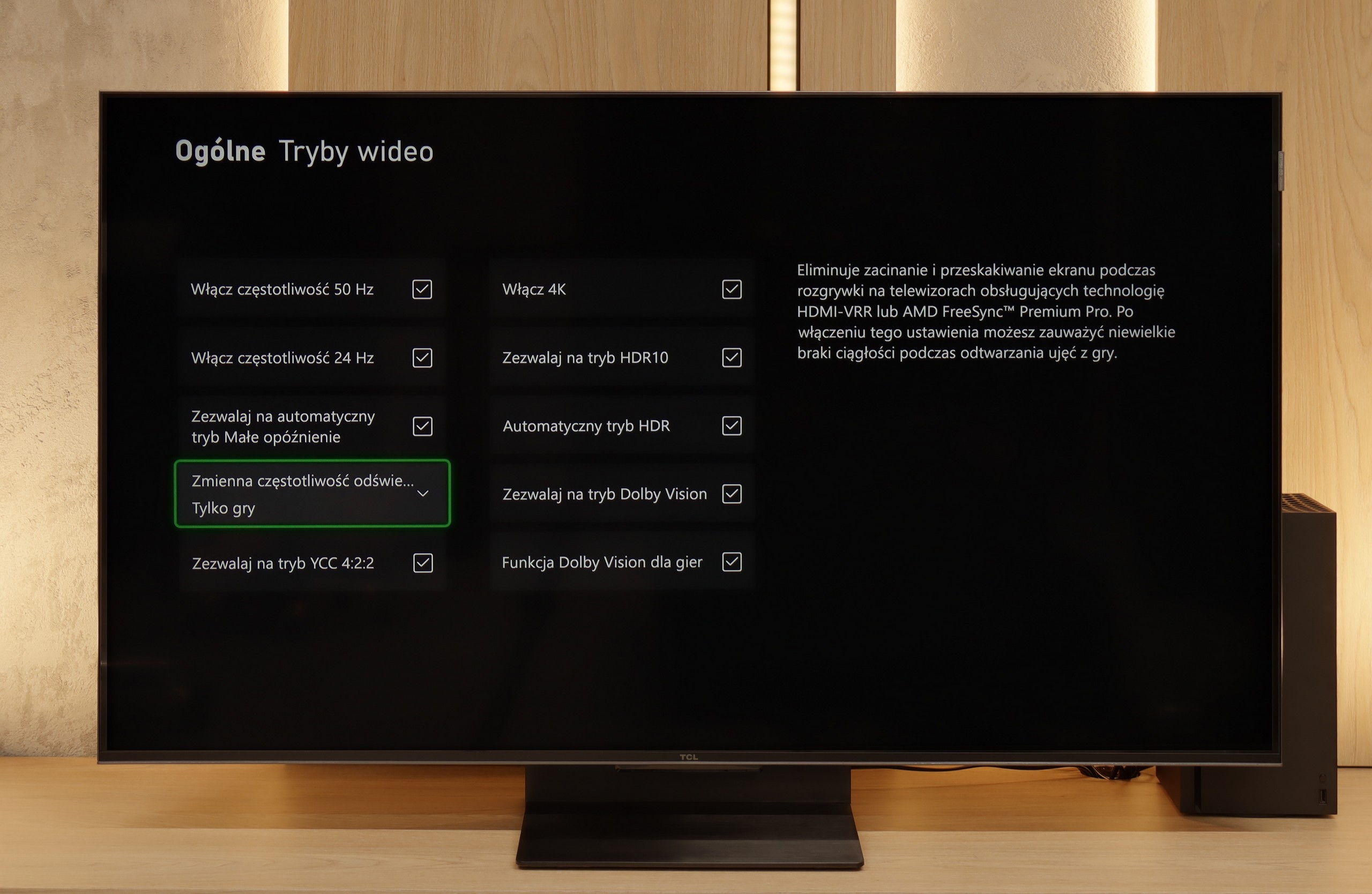
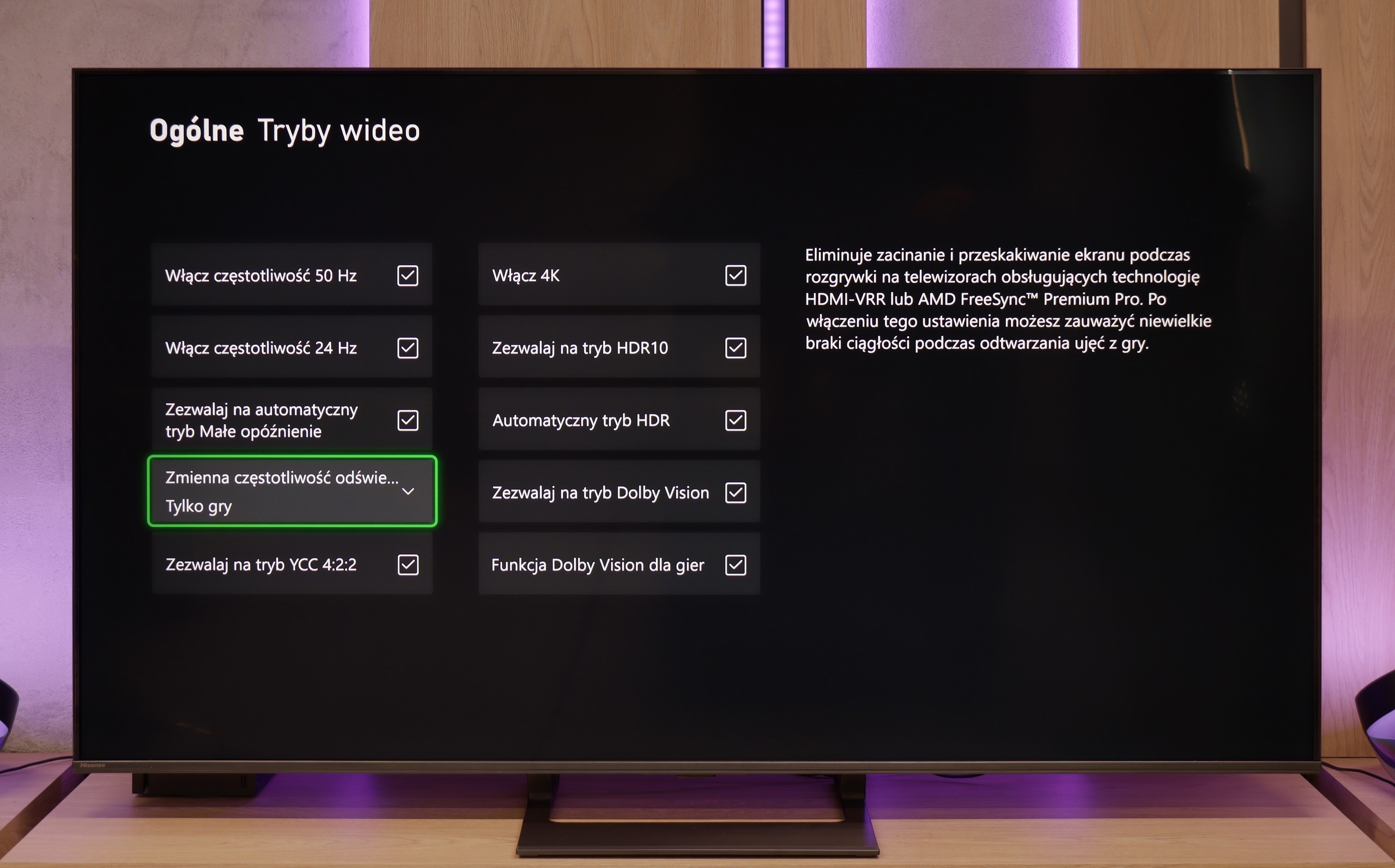
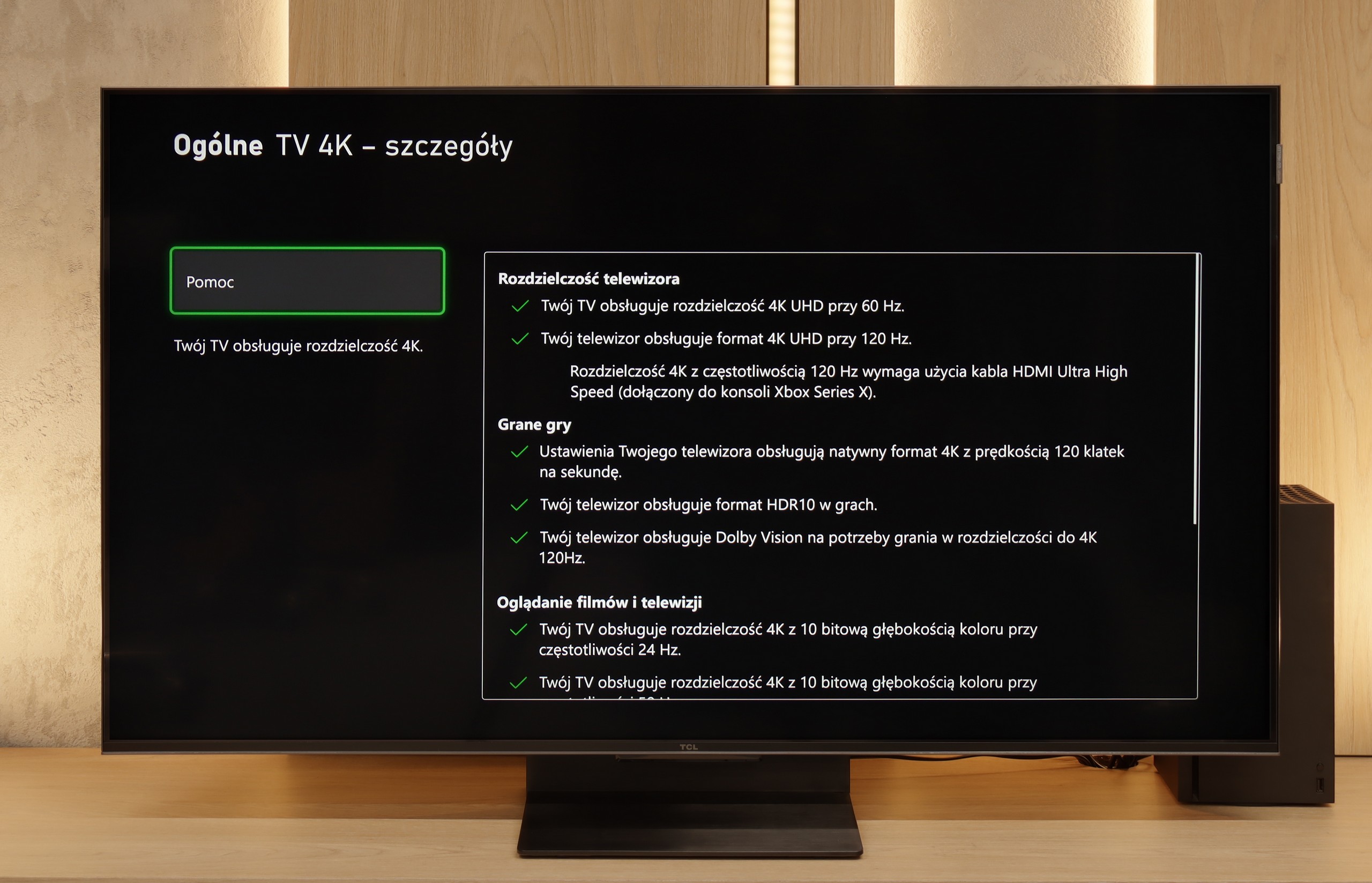
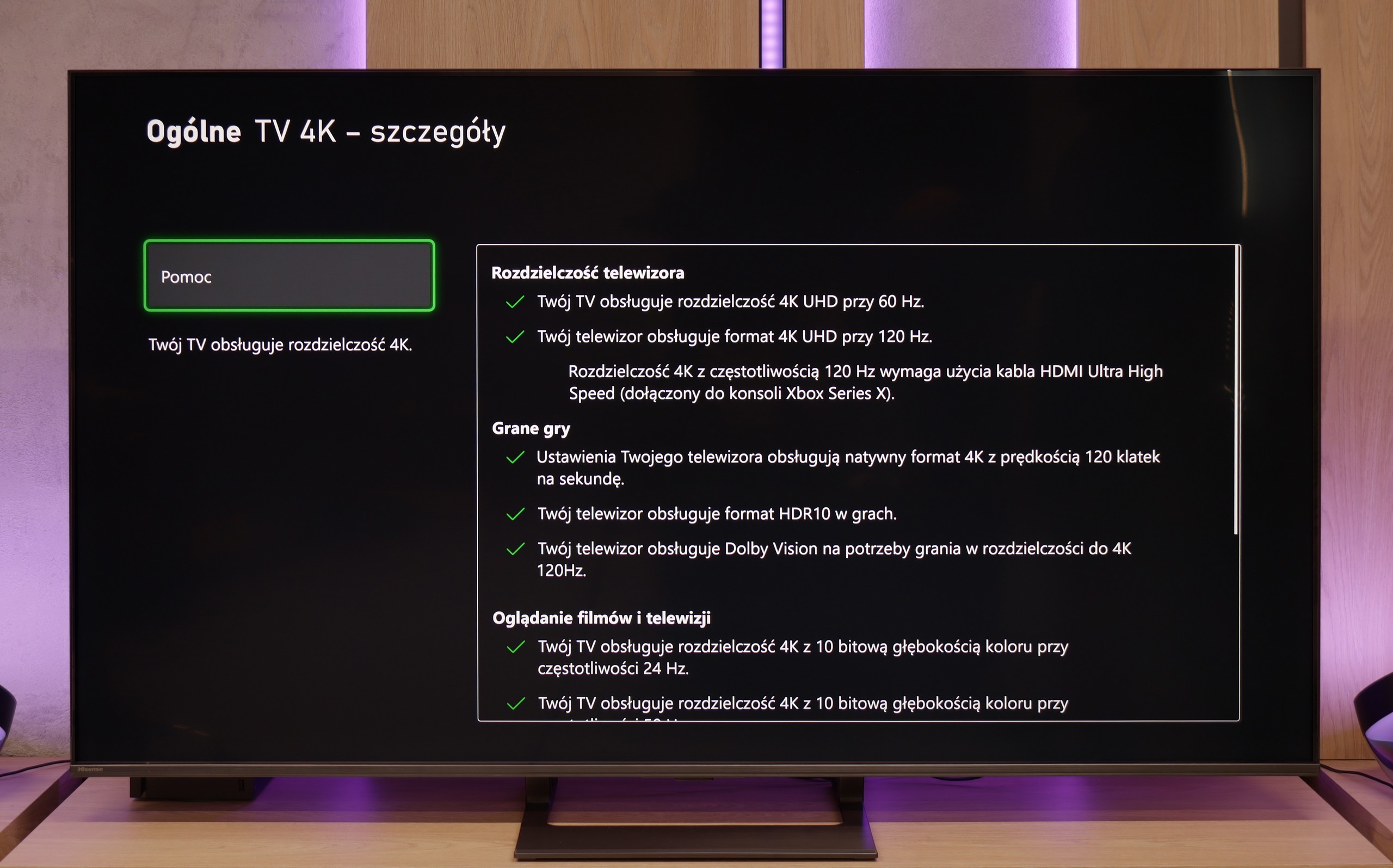
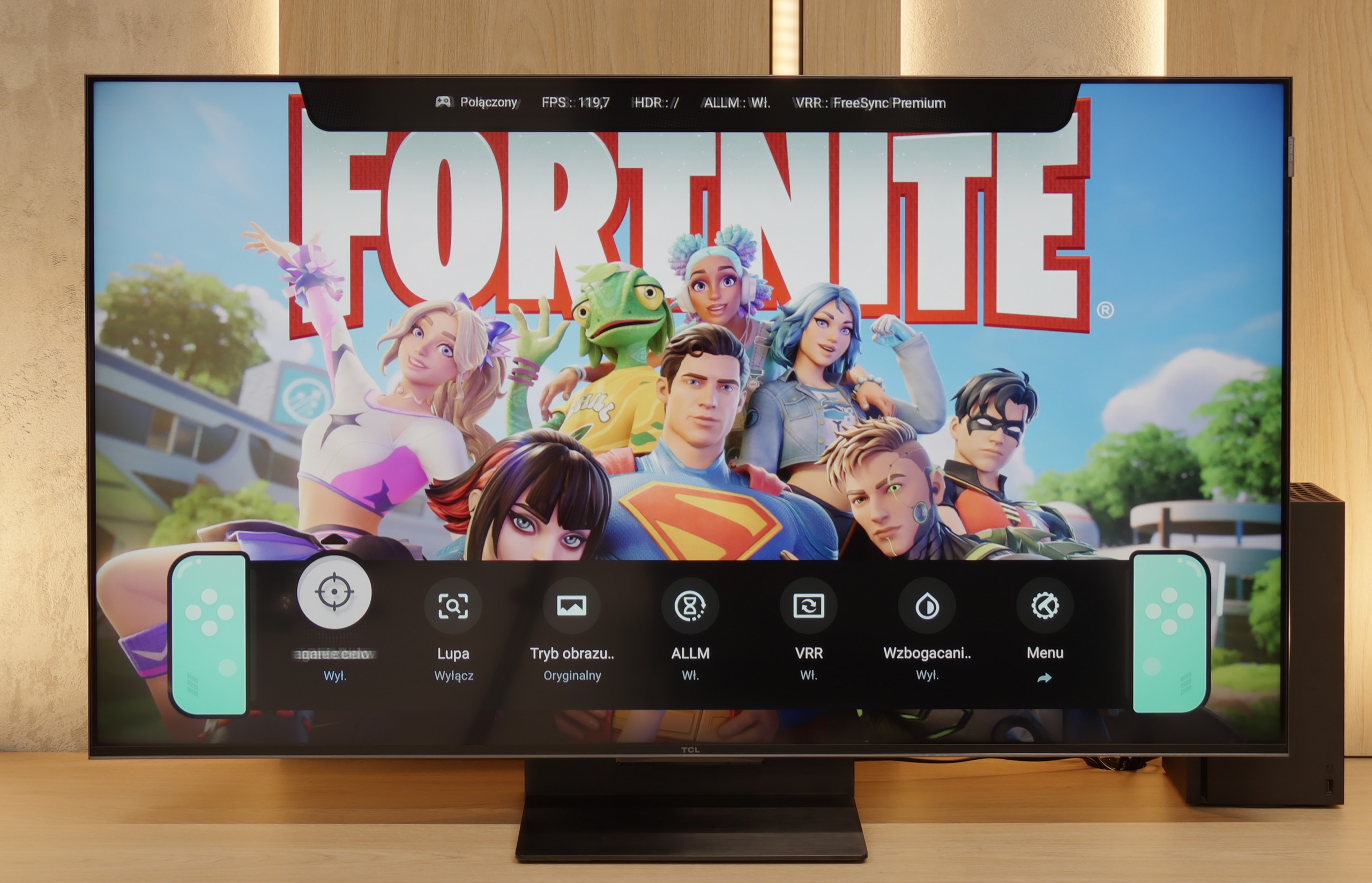
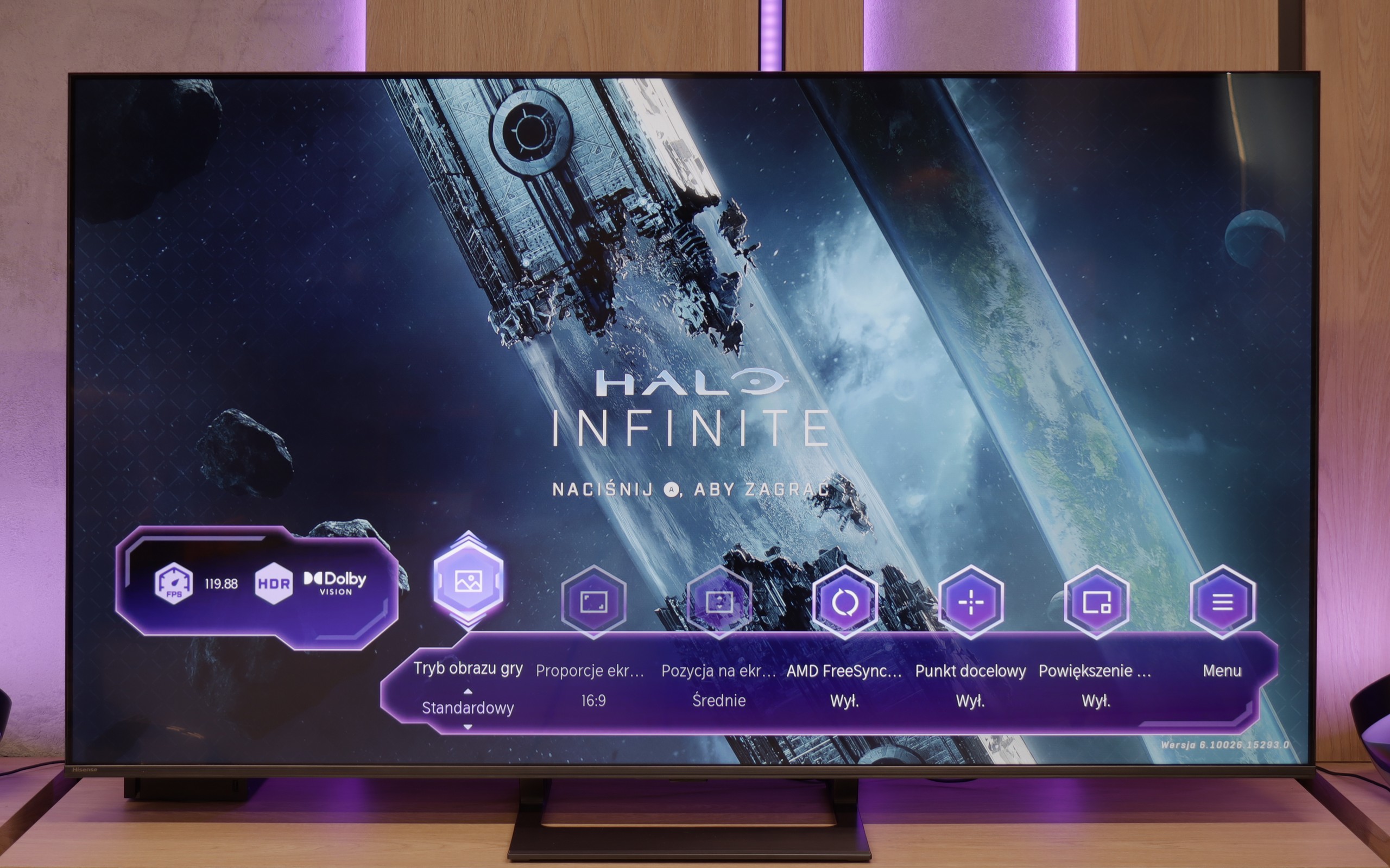
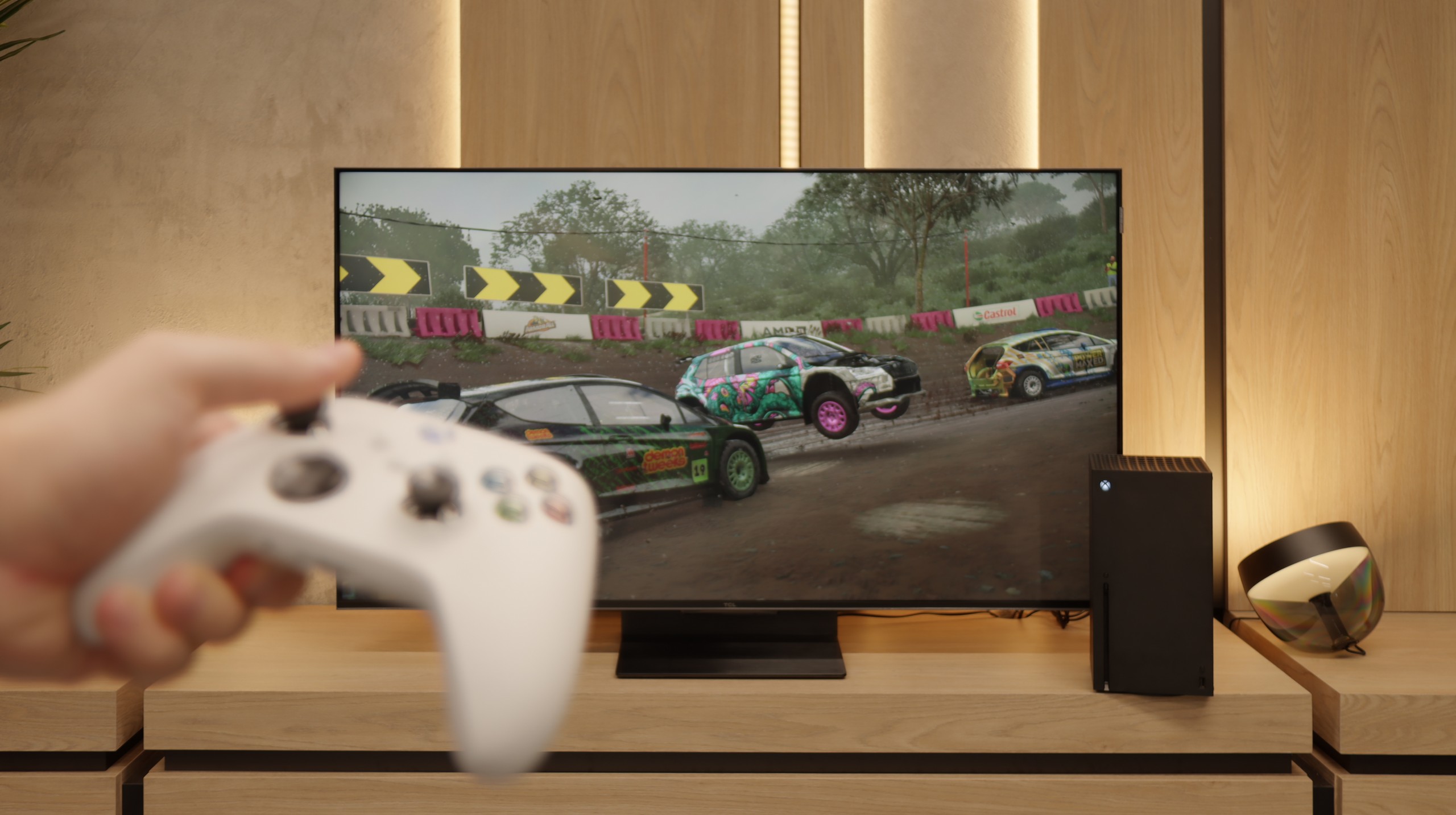
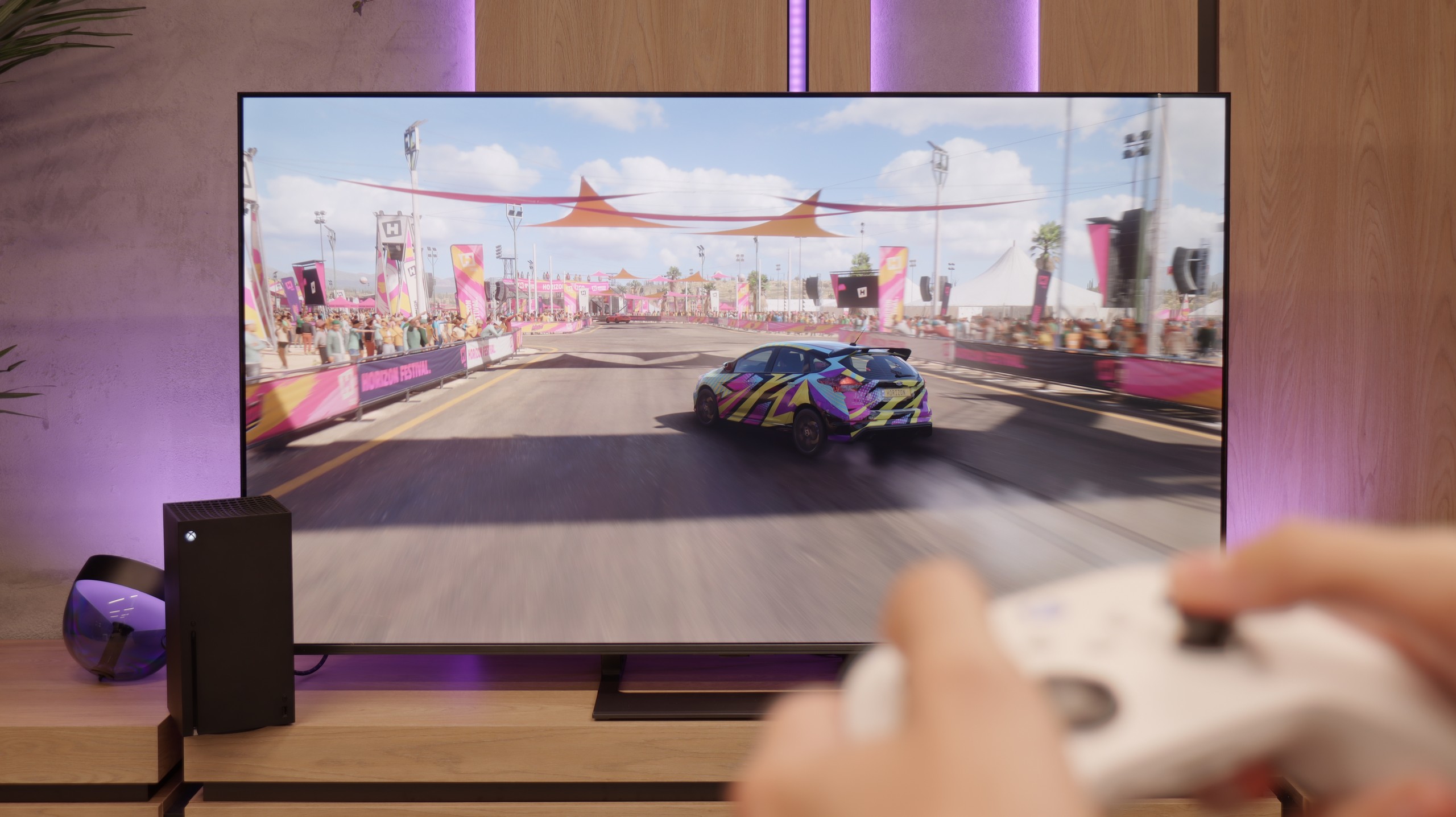
TCL C7K is a TV that looks like the dream equipment for gamers on paper – and most importantly, it also performs well in practice. First, the good news: we have two HDMI 2.1 ports with full bandwidth, so we can easily connect both a console and a computer, taking full advantage of their capabilities. The panel itself supports 144 Hz refresh rate, which provides a significant advantage in dynamic games. Additionally, it comes with a full package of gaming features: VRR (Variable Refresh Rate), ALLM (Auto Low Latency Mode), and Dolby Vision support in games. There is also an HGiG mode, which allows for HDR effects that align with the creators' intentions. GameBar, which is an information bar for gamers. It operates quickly, looks clear (like a Nintendo console👌), and shows what’s most important: the current frame count, VRR status, and even HDR parameters.
The Hisense E8Q does not hide its gaming pedigree. The specification alone reveals that we are dealing with a television that will work great as a gaming screen. Variable Refresh Rate (VRR)? Yes. Automatic low latency mode (ALLM)? It's there too. Additionally, there is impressive refreshment – 120 Hz in 4K or even 240 Hz in Full HD. Such a set is rare in this price segment. Everything works smoothly and without major surprises. The only missing element – like in the U7Q – remains support for HGiG. It's a pity, because this feature makes it easier to match the brightness curve to the capabilities of a particular television, improving visual consistency with the intentions of HDR game creators. Without it, one has to manually tweak the settings, which does not always yield a satisfying result.
Input lag
9.7/10
9.7/10
SDR
HDR
Dolby Vision
When it comes to delays, the C7K doesn't give any reasons to complain. In games at 120 Hz, the input lag is around 10 ms, which means the television responds really quickly. Interestingly, even in Dolby Vision mode, the result is very similar, which is not always the standard. Good job, TCL. At 60 Hz, the lag obviously increases a bit, but that is completely normal and applies to virtually any television with a refresh rate of 120Hz and higher. The most important thing is that everything still runs smoothly and there is no feeling that something is not responding to our actions.
The E8Q handles delays very well. For 120 Hz content, the input lag is super low – practically unnoticeable even for more demanding gamers. At 60 Hz, the values are a bit higher, but still comfortably within the "placebo" range – there's nothing to complain about. The biggest increase in lag was noted in Dolby Vision Gaming mode. The TV needs more time to process the signal in this mode, but even then, it does not exceed 30 ms. While these may not be perfect values, they won't pose any obstacles for most gamers – especially console gamers.
Compatibility with PC
8.4/10
8.6/10
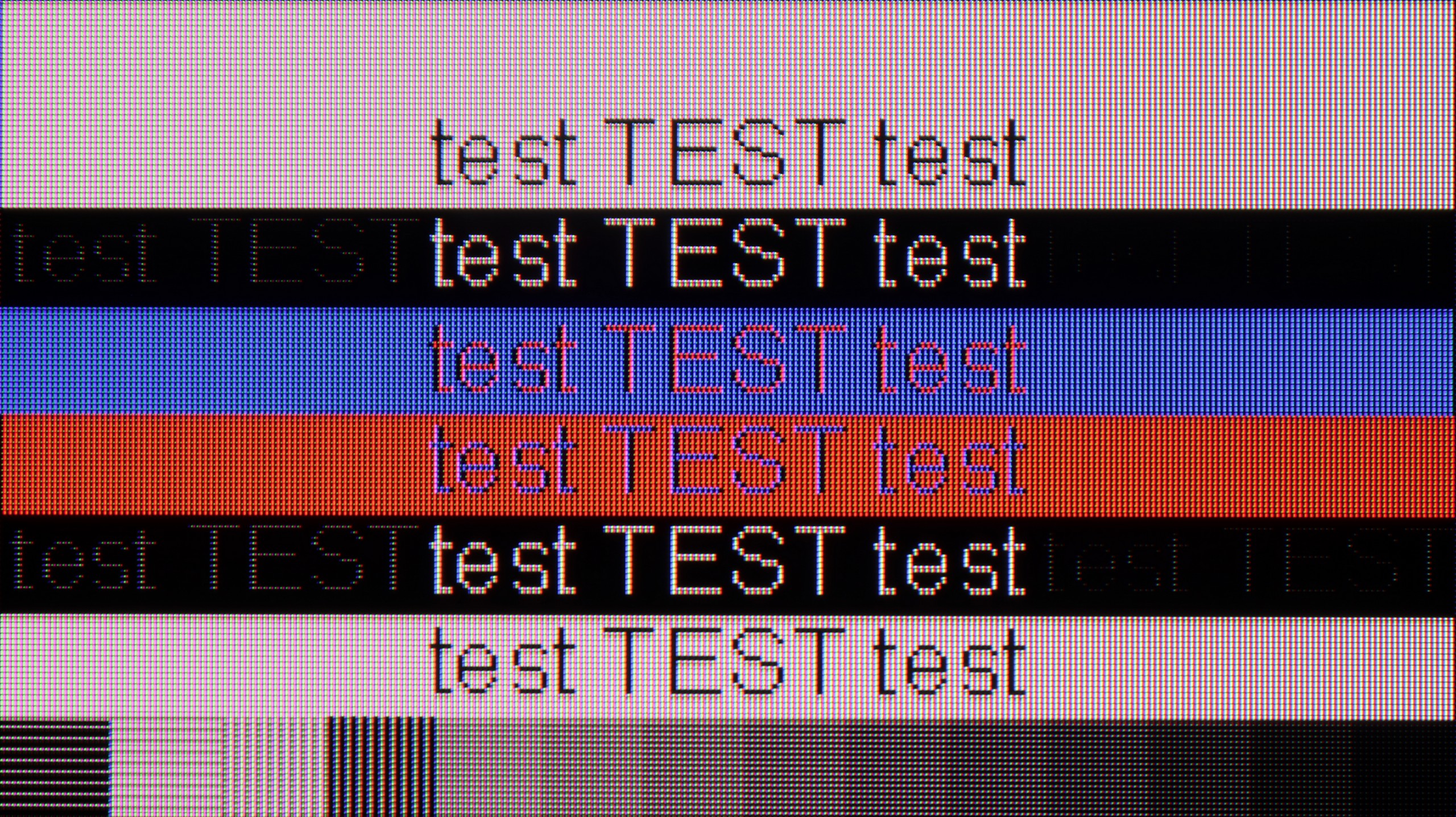
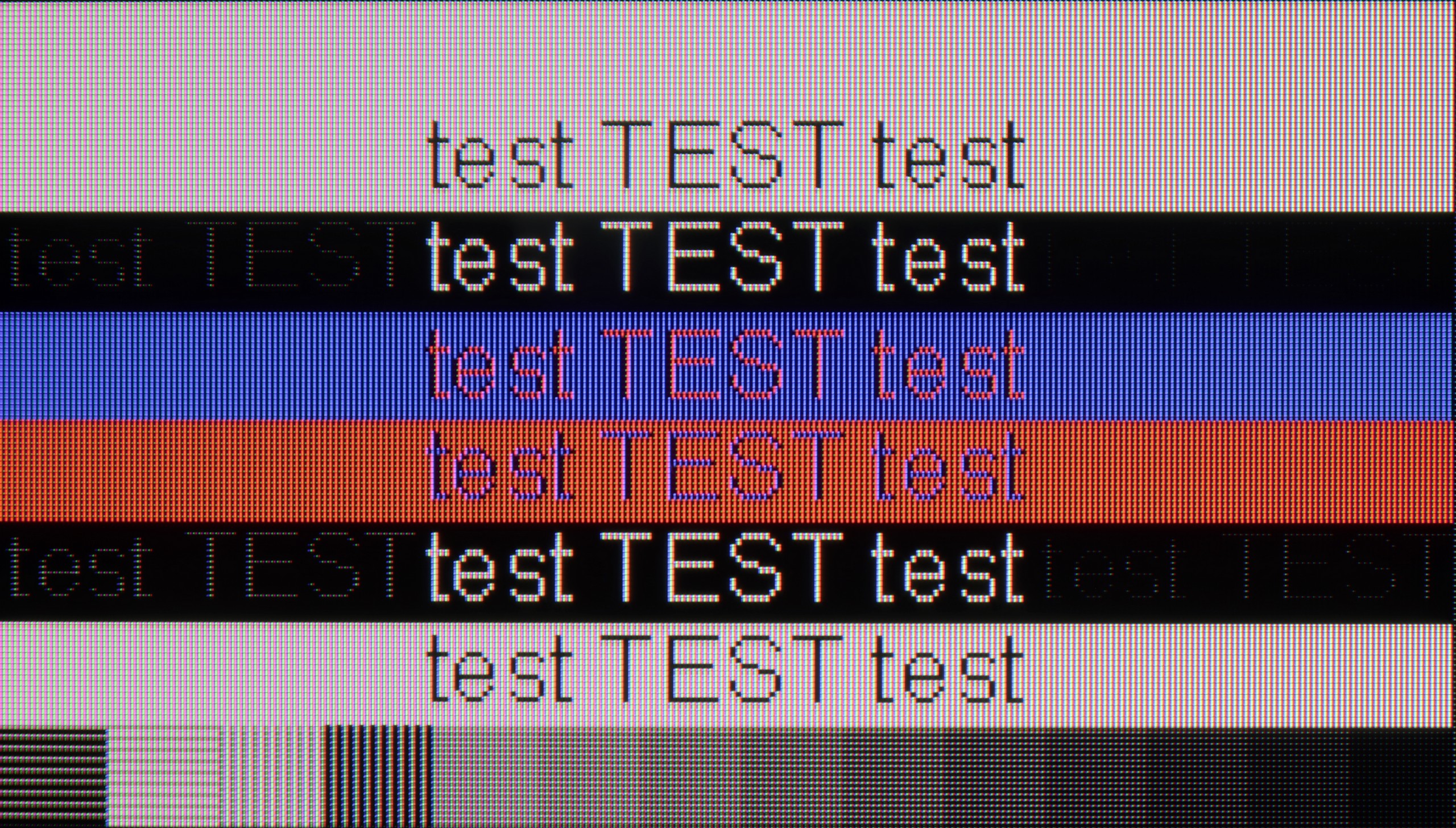
If we intend to connect the C7K to a computer – especially for gaming – there’s definitely something to play with. We have 4K at 144 Hz, which sounds great on its own, but if we drop the resolution, the TV can display even 280 Hz. In e-sports, where every fraction of a second counts, this makes a real difference. On top of that, there's support for G-Sync and FreeSync, so regardless of what graphics card we have – the image will be smooth, without any stuttering or tearing.
But if we plan to put the C7K on a desk and use it like a monitor, it’s a little less “rosy.” Sure, it supports chroma 4:4:4, so fonts should be sharp, but with very dark letters, there’s a slight blurring and dimming of the edges. It’s not something that immediately stands out during gaming or watching, but when working with text – it can be distracting. In everyday use – probably without concerns, but if we plan to place a 50-inch screen a meter from our face, it’s worth keeping this in mind.
In terms of collaboration with the computer, the E8Q performs really well. It supports chroma 4:4:4 at full 4K resolution and at the highest refresh rate, so the readability of fonts – even the smallest ones – is at a very good level. There are minor blurriness issues with exceptionally thin fonts, but in everyday use, this is hard to consider a serious problem. A nice addition for PC gamers is the ability to achieve up to 288 Hz at lower resolutions. The E8Q communicates effortlessly with powerful graphics cards, making it an interesting choice not only for movies or consoles but also for gaming on a computer.
Viewing angles
3/10
3/10
There are no surprises here – the C7K has classic viewing angles for a VA panel. That is: sitting directly in front – it’s great. Colors look good, contrast is strong, everything is in place. But just shifting a little to the side and it starts to get worse – the image loses saturation, blacks turn gray, and the overall impression diminishes a bit. So if we plan to watch together with a few people or have a couch that takes up half the living room – it’s worth seating everyone more centrally. You can watch from the side, but don’t expect miracles – that’s just a characteristic of the VA panel.
E8Q, like most TVs with a VA panel, looks best when we sit directly in front of the screen. In this position, one can count on deep blacks, good color saturation, and high contrast. Unfortunately, just moving slightly to the side causes the picture quality to suffer – colors start to fade, and blacks become more gray than black. This isn't surprising, but it's worth keeping in mind, especially if we plan to watch in a larger group from different positions in the living room. As a consolation – in return, we get significantly better black levels than with IPS panels.
TV efficiency during daytime
6.1/10
6.2/10
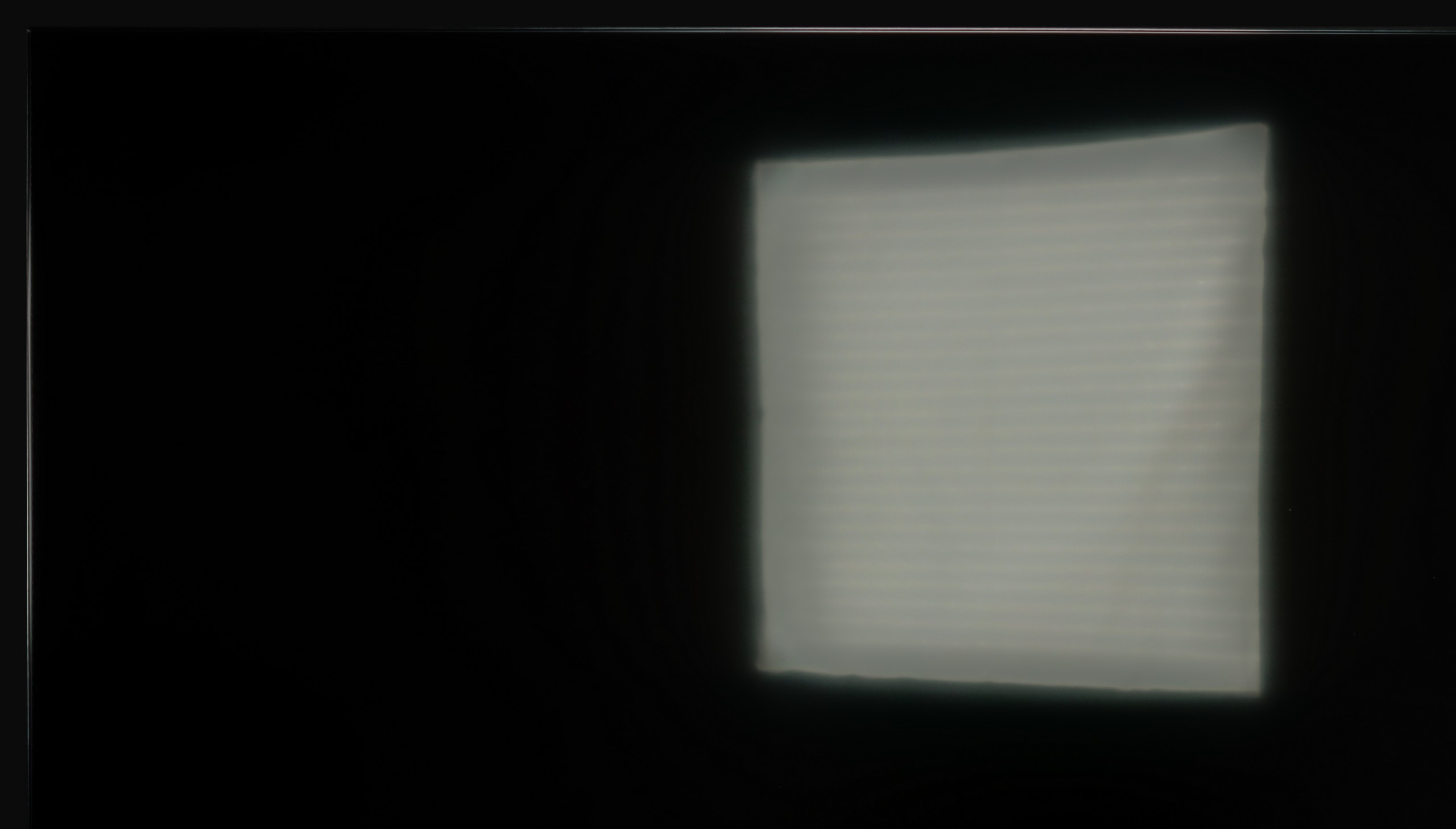
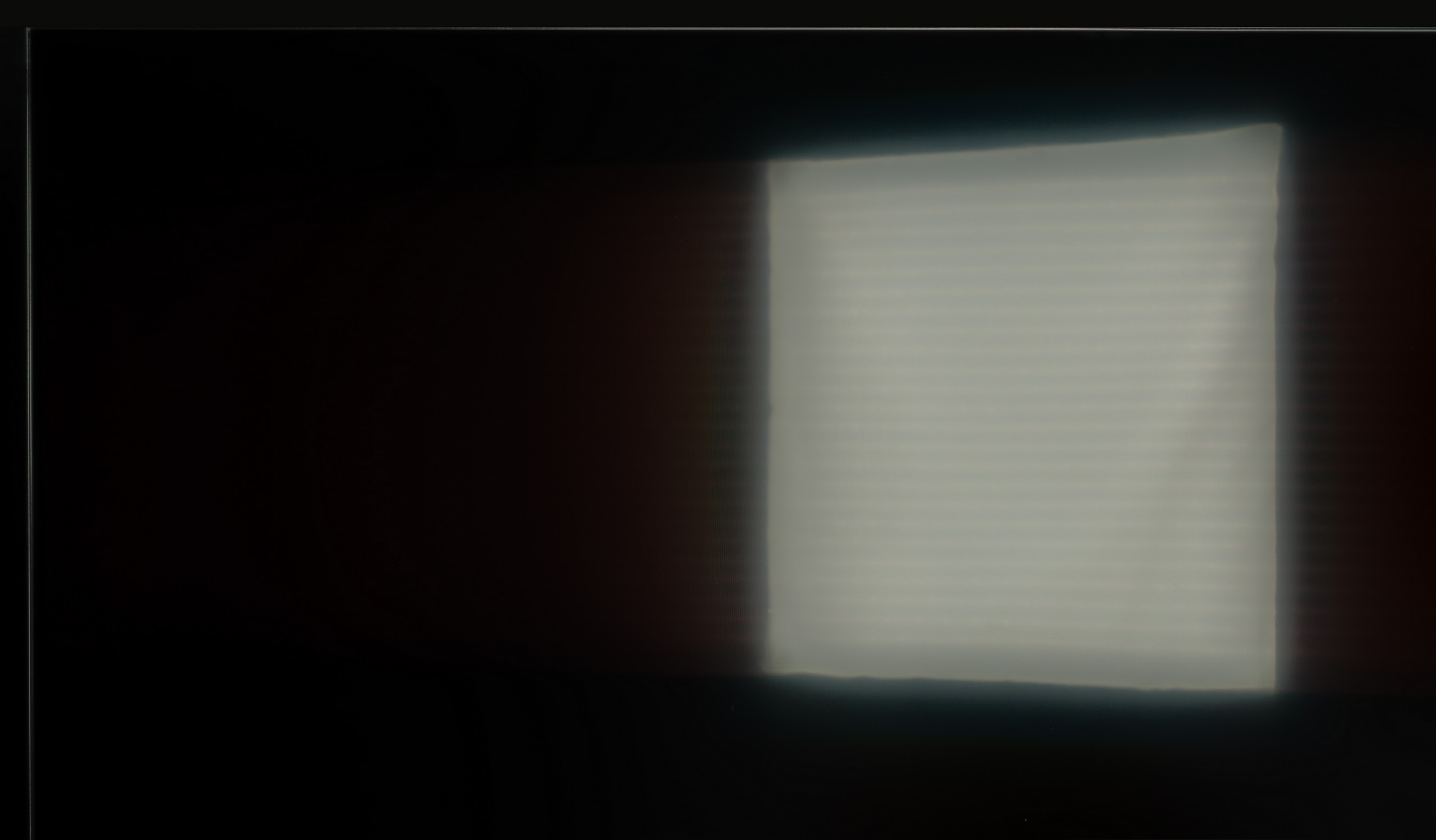


Matrix brightness
Average luminance SDR
Hisense E8Q: 504 cd/m2
TCL C7K / QM7K 50": 475 cd/m2
Fortunately, the TCL C7K performs quite well in a bright room. The applied matrix has a satin finish that effectively reduces reflections, so even on a sunny day, we don't have to worry about reflections from lamps or windows. Importantly, the colors maintain their intensity and do not wash out, as can happen with weaker matte panels. When it comes to brightness itself, the average for content like YouTube or regular TV is slightly below 500 nits. This is not a record result – for example, the MQLED85 (C765) performs better in this regard. However, for everyday watching during the day, it should work without major issues, as long as we don't plan to place it opposite a south-facing window without curtains.
The Hisense E8Q is not afraid of bright interiors. Even when the full sun is shining outside, the television can maintain good image clarity. A brightness level of around 500 nits ensures that you can comfortably watch content during the day, without feeling that everything is drowning in glare. The satin screen coating also helps to pleasantly reduce reflections – it doesn't eliminate them completely, but limits them enough that they don't interfere with everyday viewing.
Details about the matrix
Subpixel Structure:
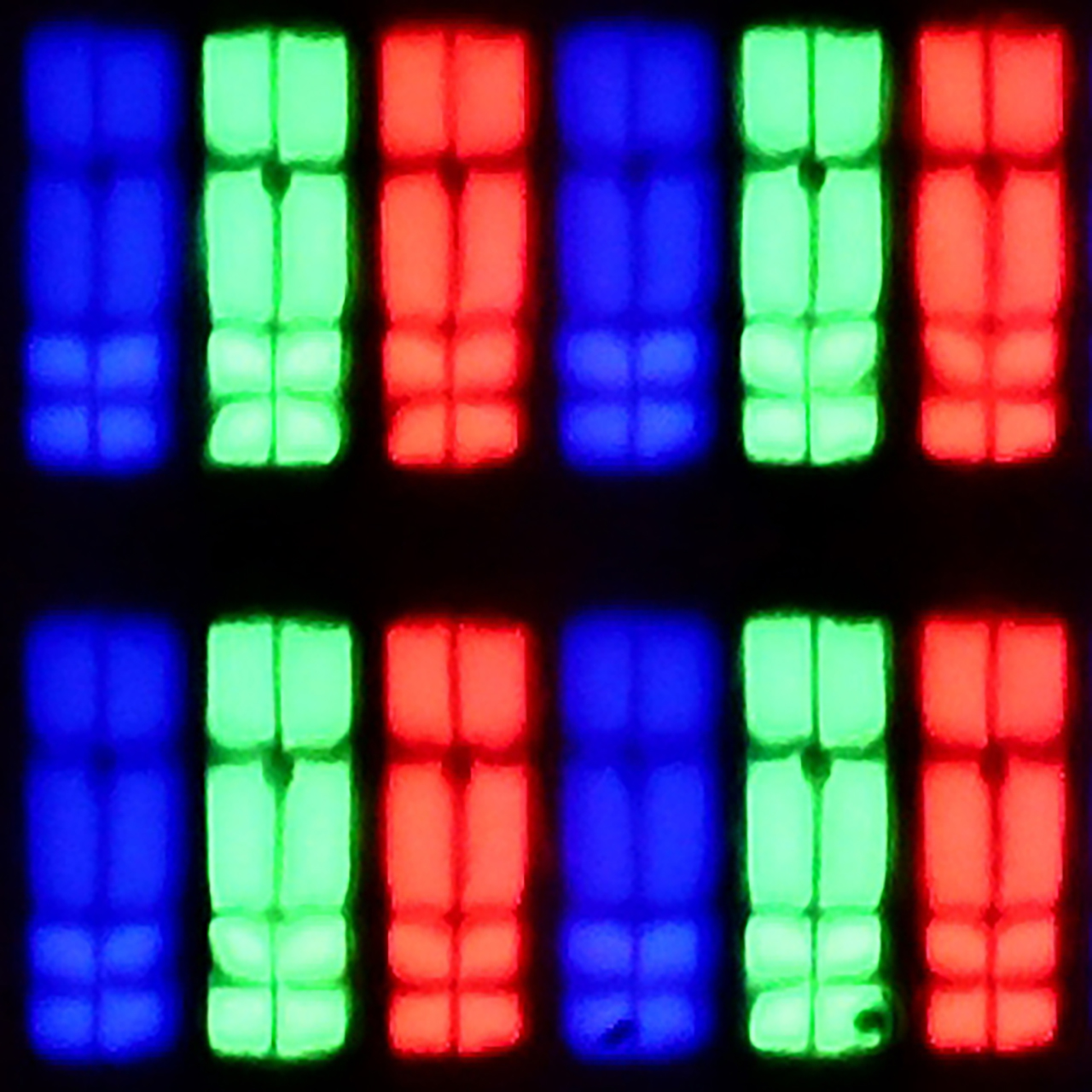
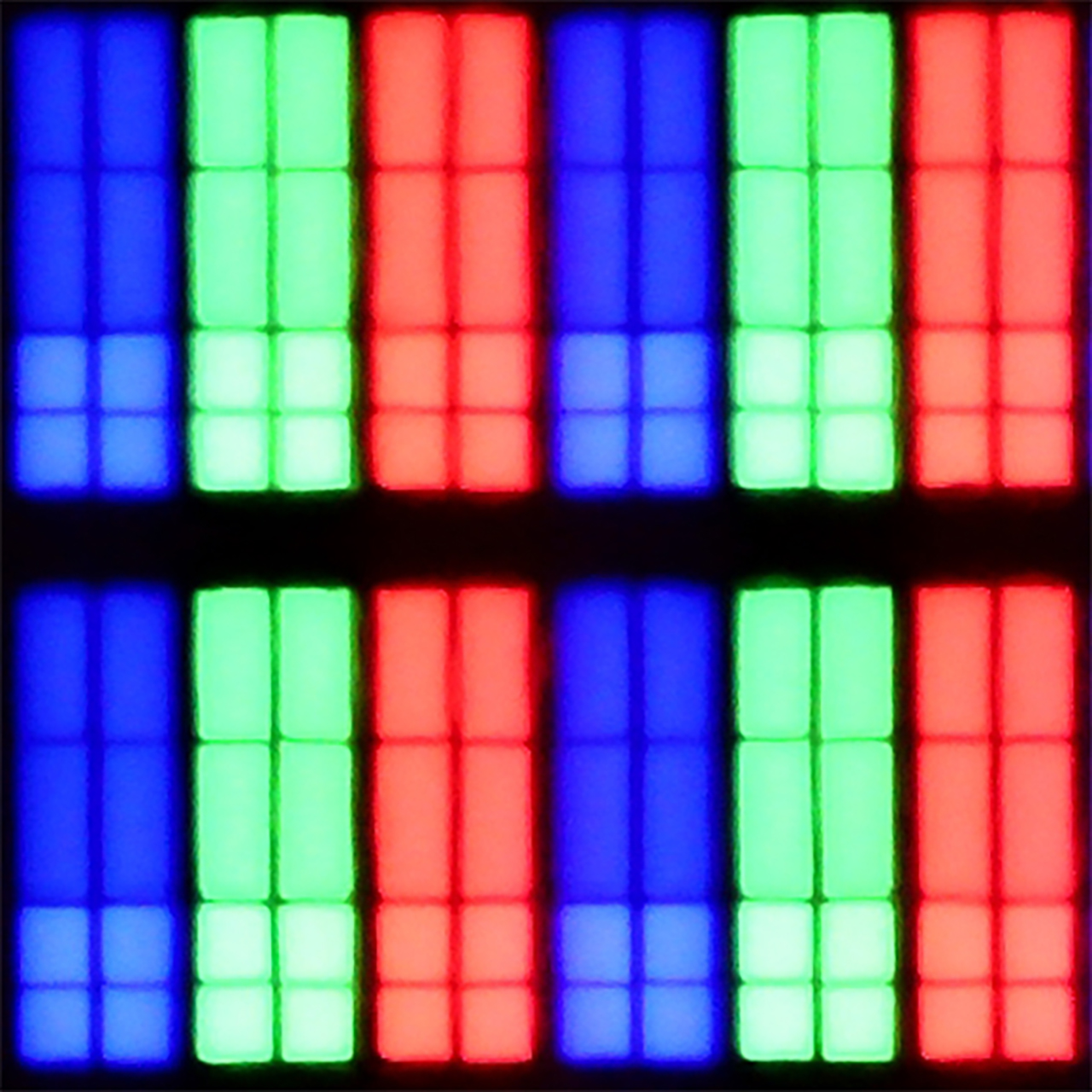
Panel uniformity and thermal imaging:
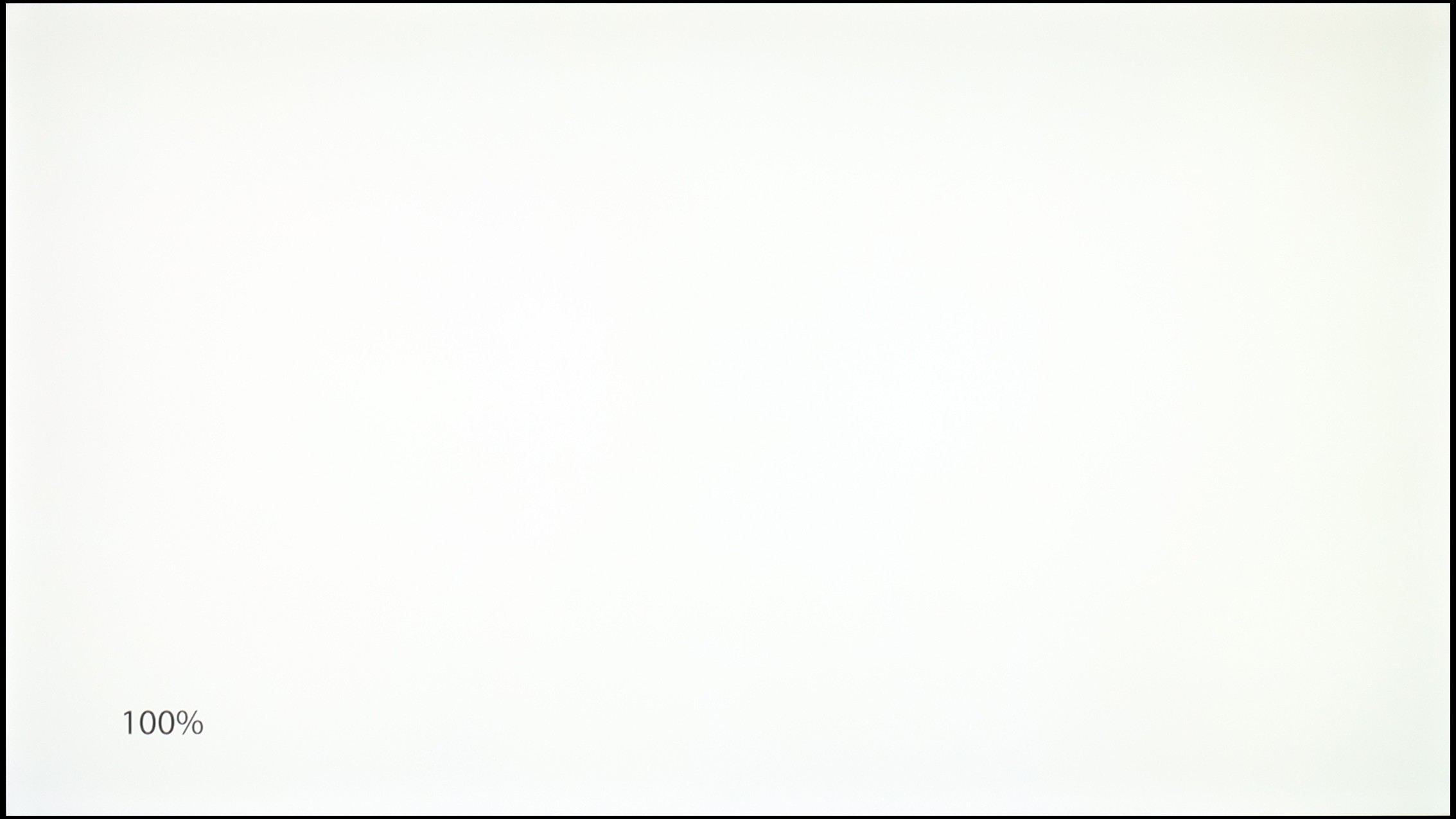
TCL C7K / QM7K 50"
Hisense E8Q
TV features
7.3/10
8.9/10
- HDMI inputs2 x HDMI 2.0, 2 x HDMI 2.1 48Gbps2 x HDMI 2.0, 2 x HDMI 2.1 48Gbps
- Other inputsRCA (Chinch)
- OutputsToslink (Optical audio), eARC (HDMI), ARC (HDMI)Toslink (Optical audio), eARC (HDMI), ARC (HDMI), Mini-Jack (Headphones)
- Network InterfacesWi-Fi 2.4GHz, Wi-Fi 5GHz, Ethernet (LAN) 100MbpsWi-Fi 2.4GHz, Wi-Fi 5GHz, Ethernet (LAN) 100Mbps
- TV receptionDVB-T, DVB-T2, DVB-S, DVB-S2, DVB-CDVB-T, DVB-T2, DVB-S, DVB-S2, DVB-C
Classic features:
- Recording to USB (terrestrial TV)
- Recording programming
- Picture in Picture (PiP)
- RF remote control (no need to aim at the screen)
- Backlit remote control
- Teletext
- Audio only mode
- Bluetooth headphones support
- Simultaneous Bluetooth headphones & TV audio
Smart features:
- AirPlay
- Screen mirroring (Windows Miracast)
- Voice search
- Voice search in native language
- Ability to connect a keyboard and mouse
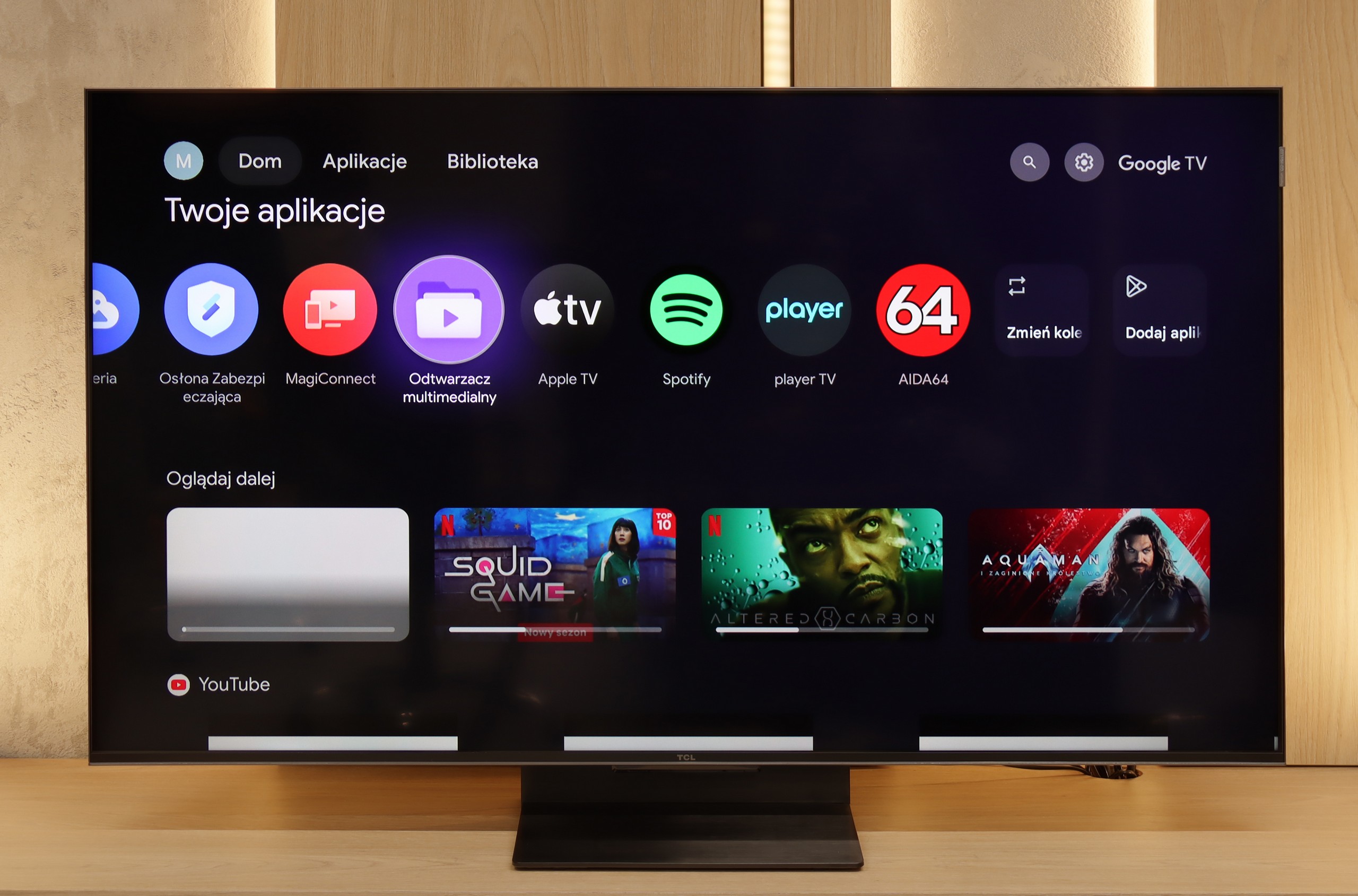
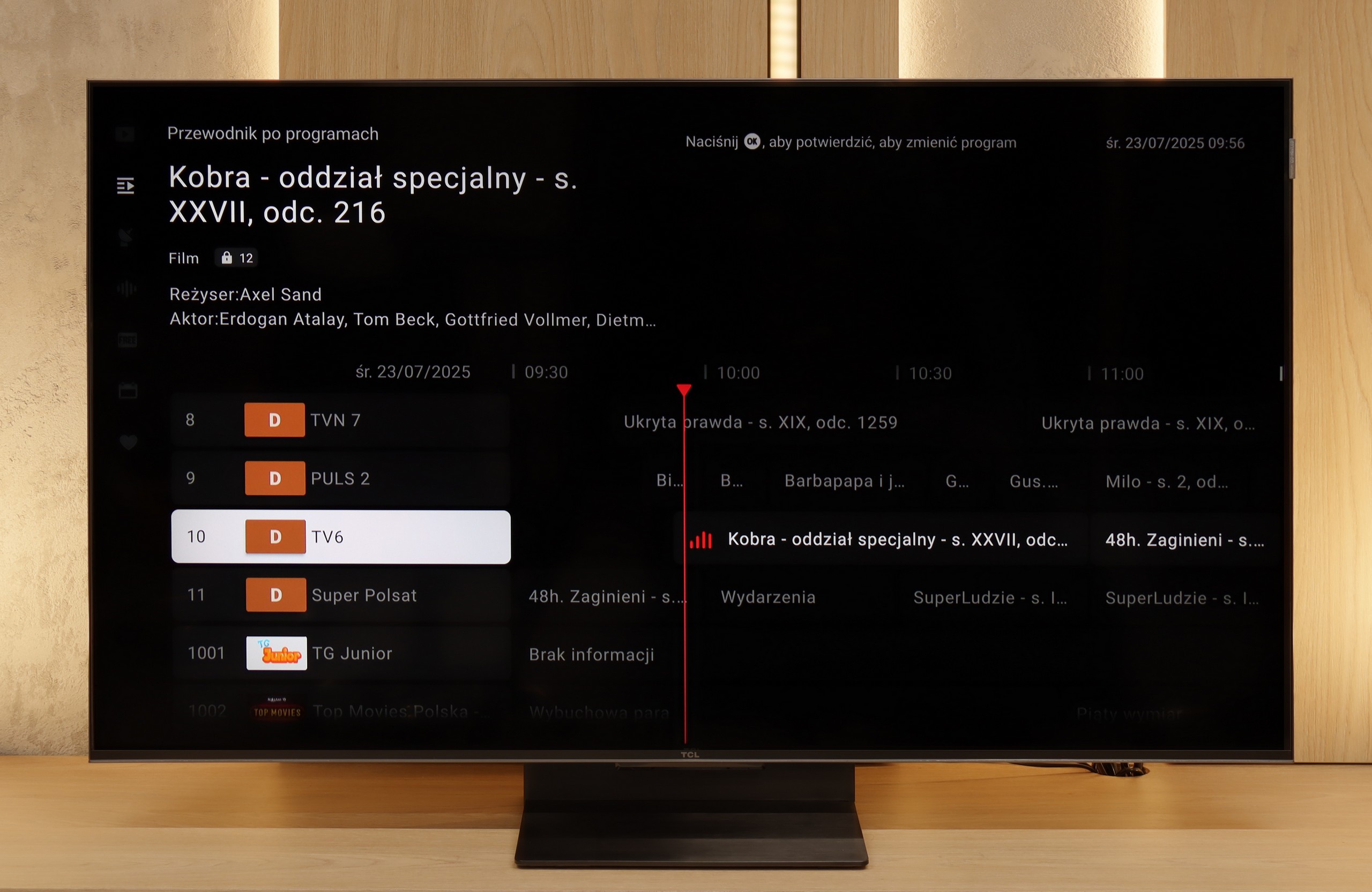
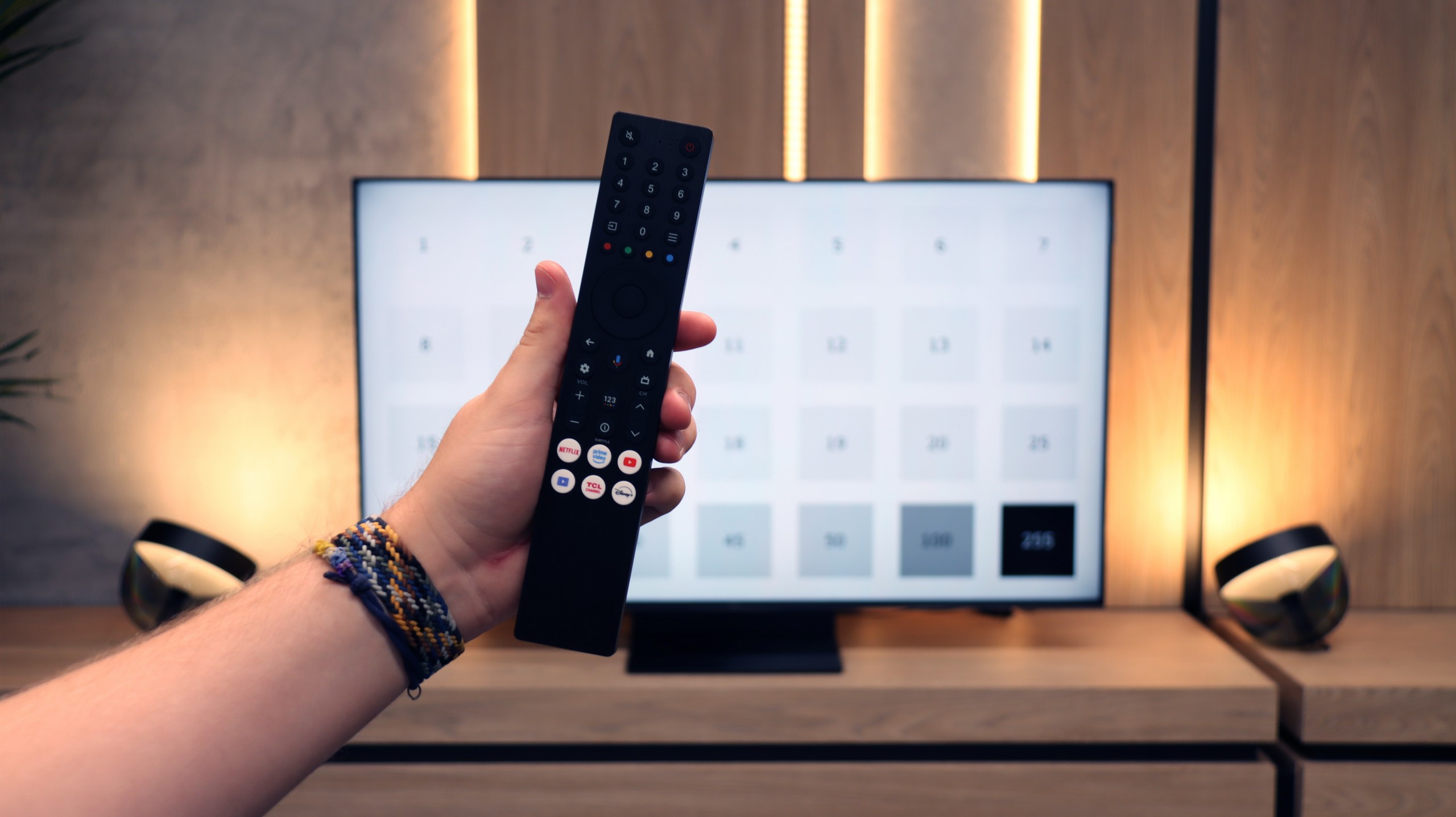
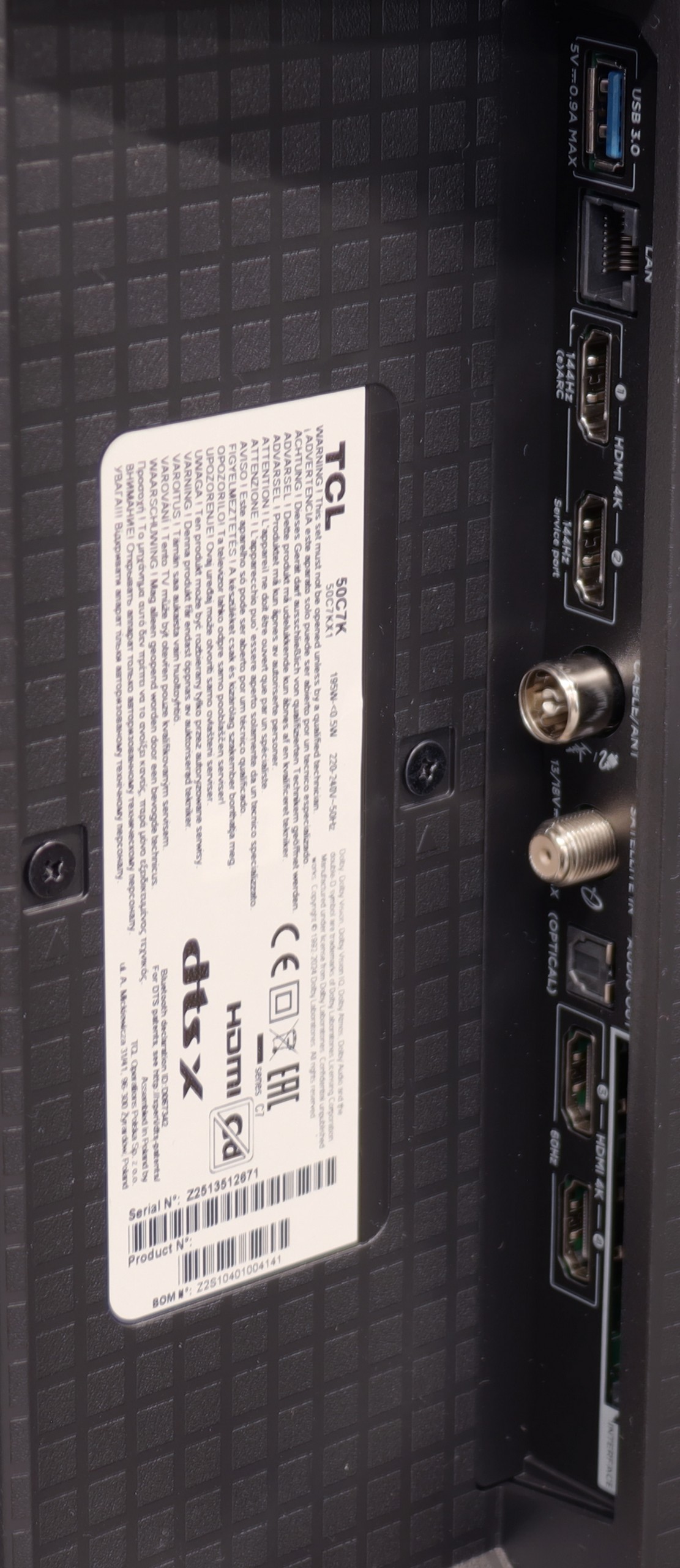
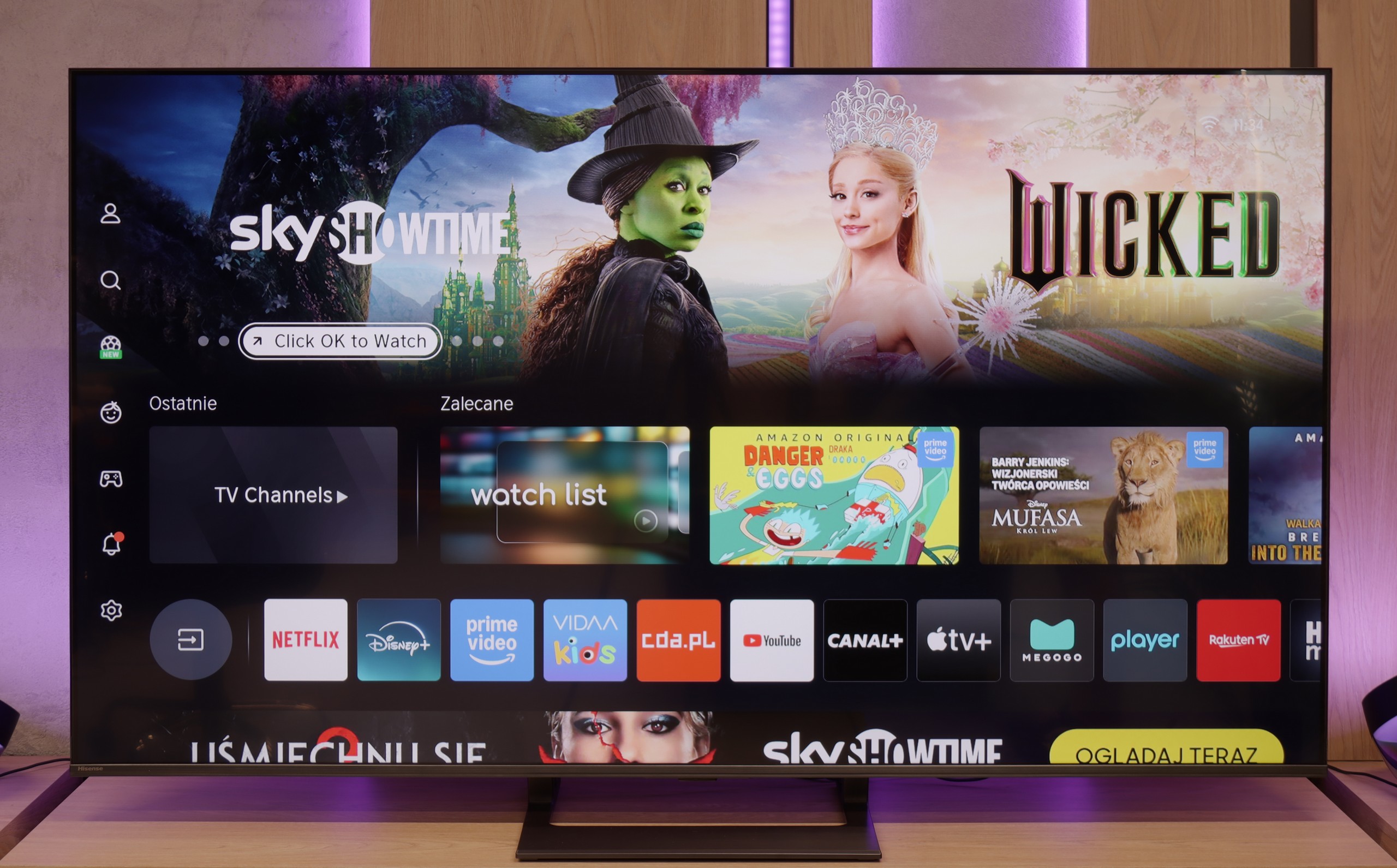
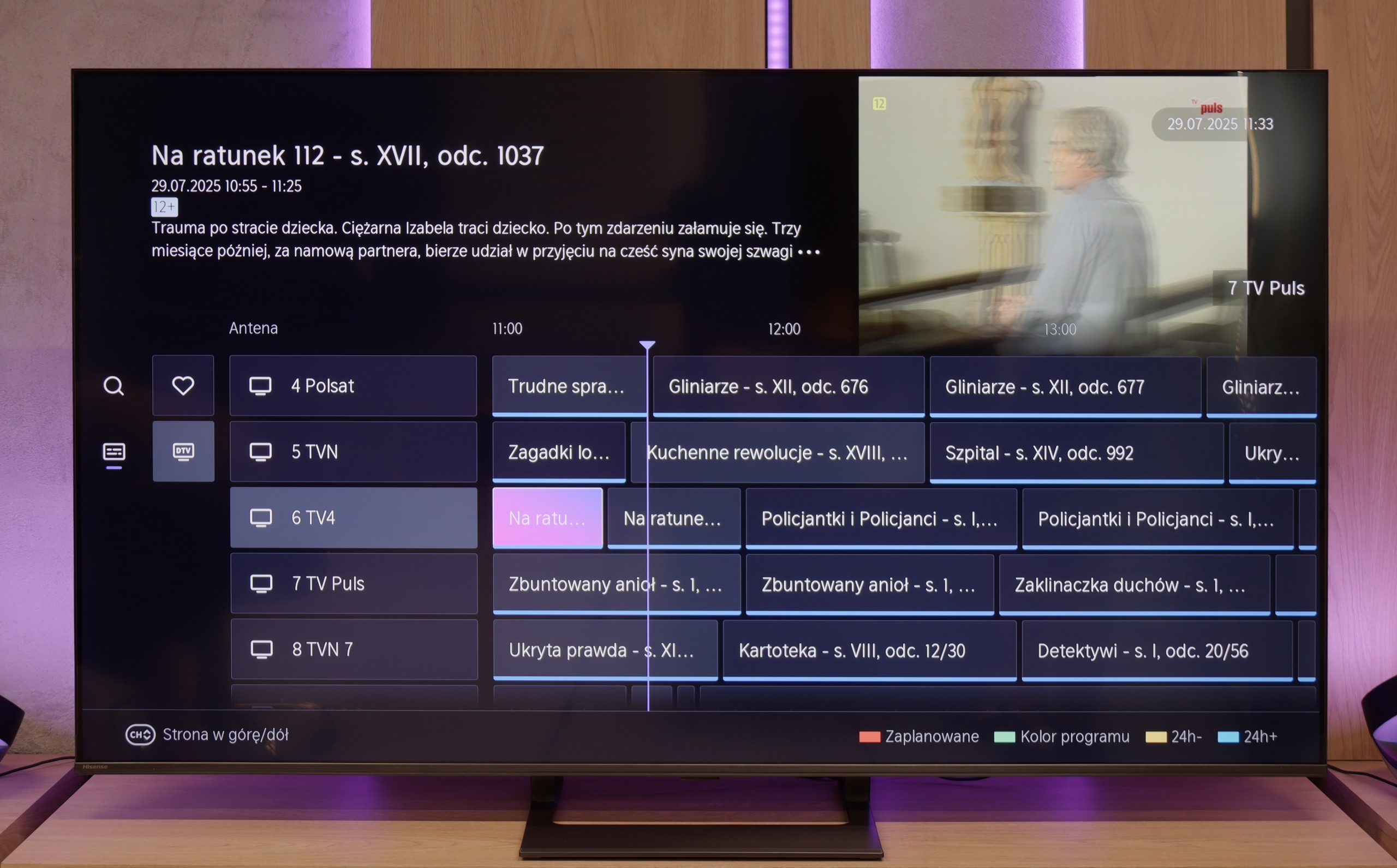
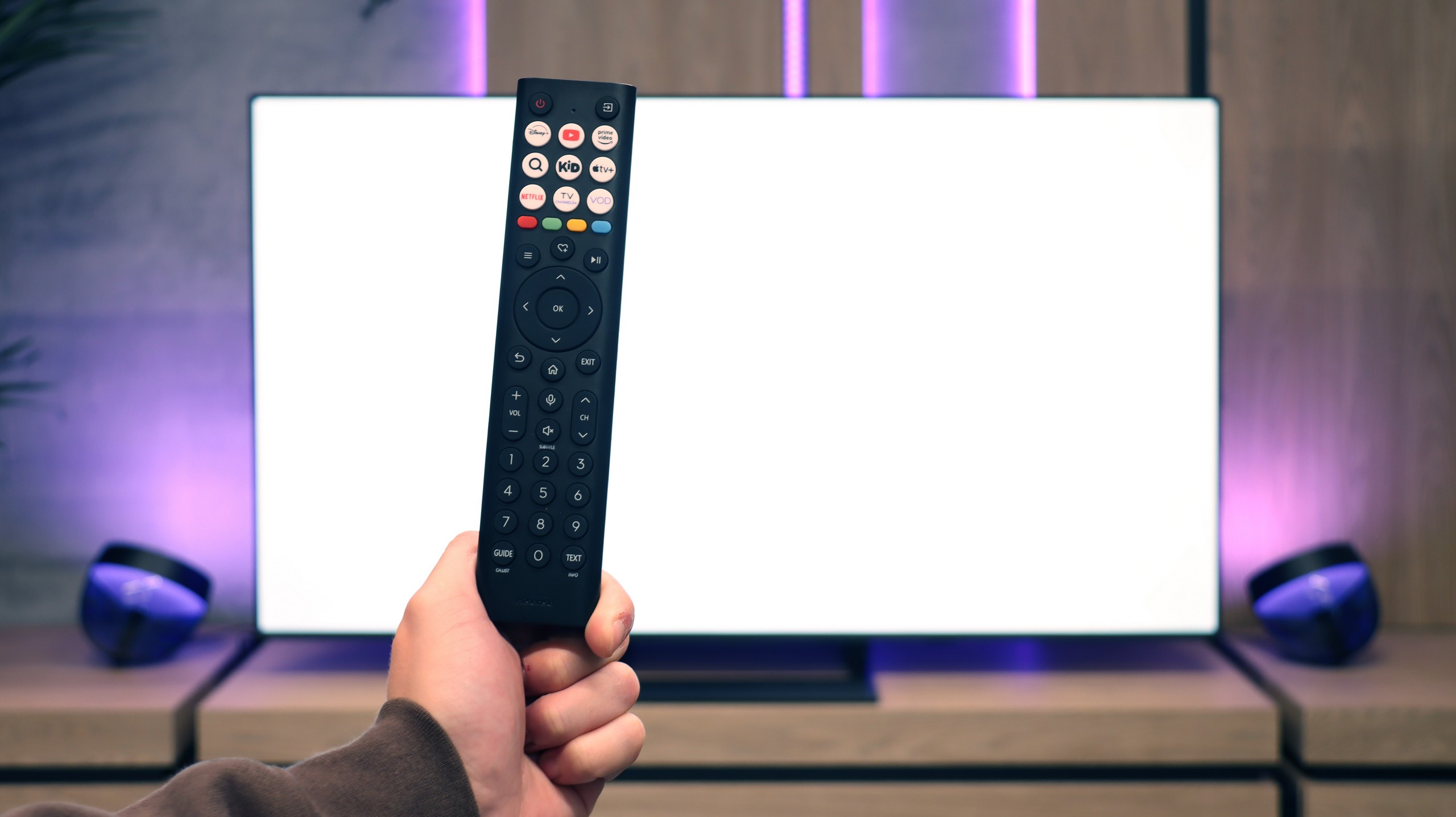

SmartTV: GoogleTV
The greatest strength of the TCL C7K in everyday use is undoubtedly the Google TV system. Thanks to it, we have access to an almost endless library of apps, including more niche ones that are often unavailable on other platforms. The built-in Google Assistant understands Polish, so we can easily ask what's on TV, what the weather is like, and even give a few voice commands to control the television. It's also worth noting the presence of Chromecast and AirPlay, which work smoothly and make life easier.
Usability Features
On the downside, the classic features are somewhat lacking. Of course, we find the basics here – teletext, EPG, or the ability to connect headphones – but that's pretty much it. There's a lack of USB recording functionality or picture-in-picture (PiP) mode, which can sometimes still be found with the competition. It's also worth remembering that the Google TV implementation on TCL can sometimes have oddly translated menu sections or minor interface bugs. These are not issues that hinder everyday use, but detail-oriented individuals may notice them.
Classic Features – E8Q
The Hisense E8Q is not only equipment for gamers or movie enthusiasts – it can also serve as a daily television for the entire family. We can record programs to USB, connect headphones or speakers via Bluetooth, and the entire interface – including the channel guide – is clear and easy to use. It only lacks the PiP function, but aside from that, the set of classic features is truly complete.
Smart TV – VIDAA System
The E8Q runs on the VIDAA system, which is becoming more refined year by year. Voice search in Polish works flawlessly, and it's easy to cast from your phone (AirPlay and screen mirroring). The system operates smoothly, without any hiccups, although – as is often the case with closed platforms – there may occasionally be one or two less popular apps missing. Therefore, it’s worth checking before purchase to see if everything we use daily is available there.
Playing files from USB
9.2/10
8.2/10
Supported photo formats:
Maximum photo resolution:
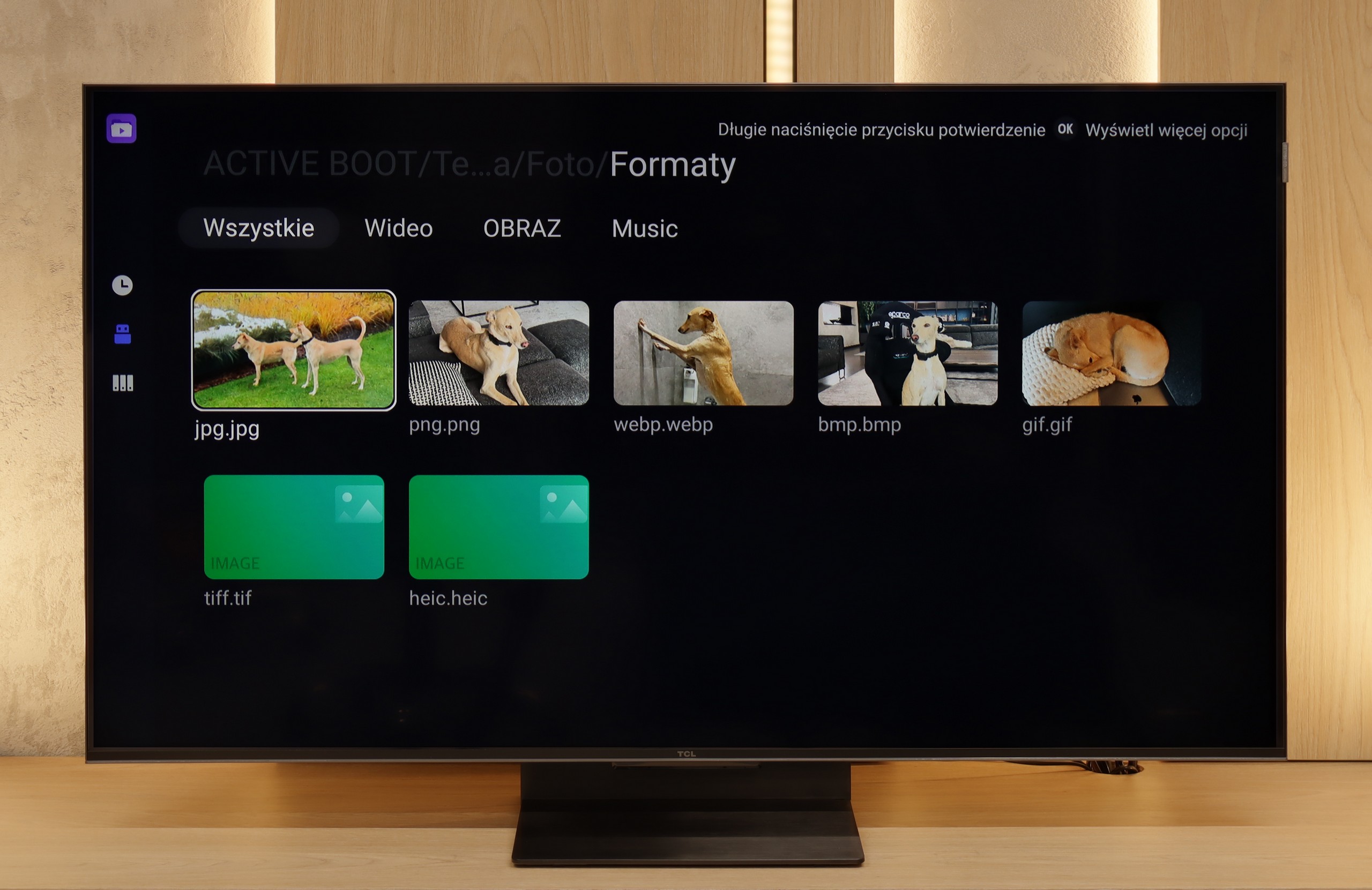
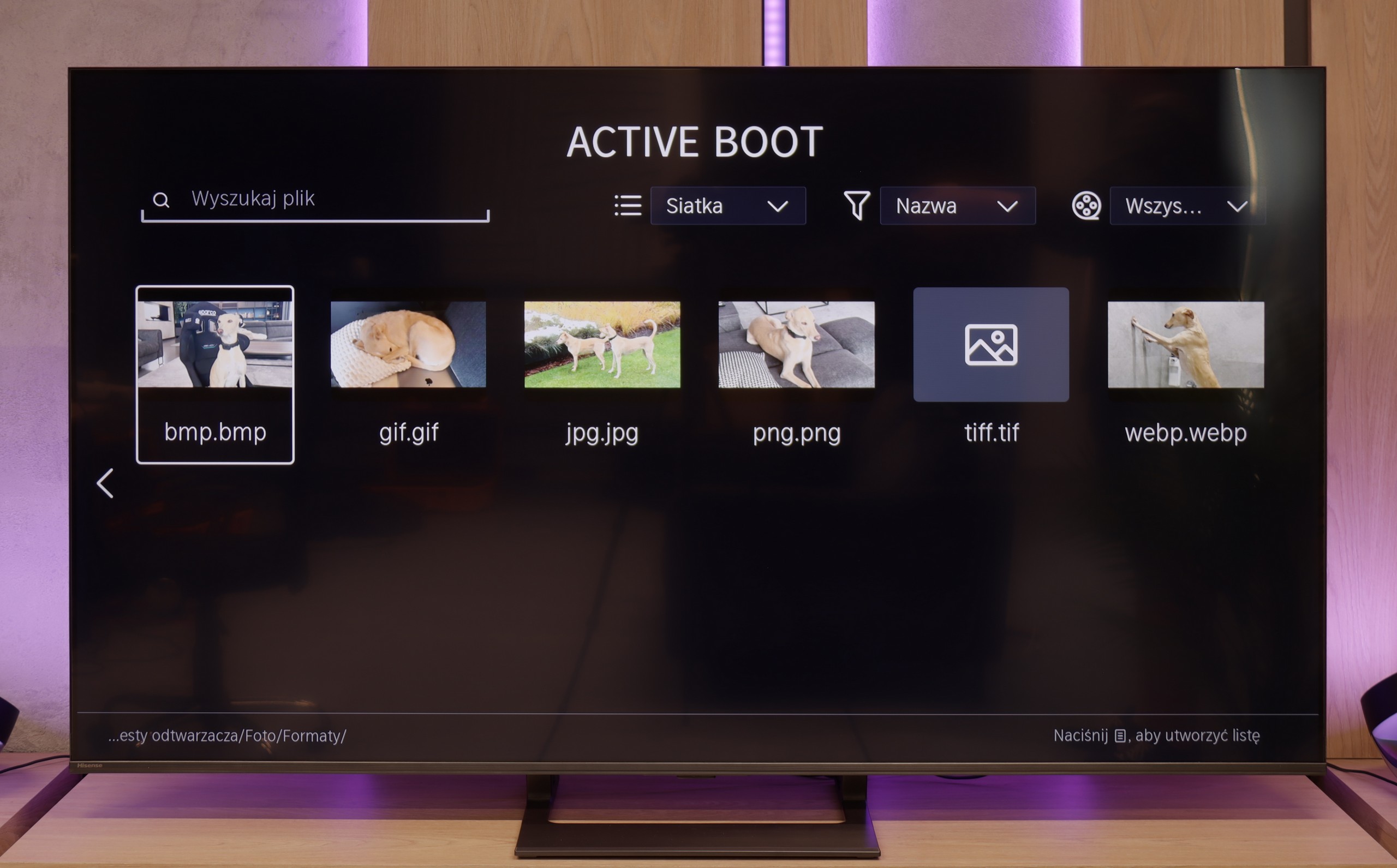
The built-in media player in the TCL C7K performs really well. It supports most popular audio and video formats, so if we want to quickly throw something from a USB drive and play it – there shouldn’t be any problem. Of course, as is usually the case, there are some minor shortcomings – not every exotic codec will work (Apple's HEIC), not all subtitles will be perfectly synchronized (txt.). However, this is where the biggest advantage of this TV comes in, which is Google TV. With access to the Google Play store, we can easily install an alternative player, like VLC, and then no file is intimidating to us.
The built-in media player in E8Q performs quite well. It supports most popular video and audio formats, and files from USB drives or external disks play without major issues. Polish characters? They are supported. Subtitles? They work. The only minor drawback is the occasional problem with displaying high-resolution images – especially those from cameras or smartphones. So if you plan to show vacation photos on a large screen, it’s worth checking in advance whether they will all load correctly from the drive’s memory or USB stick.
Apps
9.6/10
7.7/10














































Sound
7/10
7.2/10
- Maximum volume76dB85dB
- Dolby Digital Plus 7.1
- Dolby True HD 7.1
- Dolby Atmos in Dolby Digital Plus (JOC)
- Dolby Atmos in Dolby True HD
- DTS:X in DTS-HD MA
- DTS-HD Master Audio
To be honest, we didn't expect much from the sound in the 50-inch version of the C7K model. Usually, in such sizes, it's hard to get anything more than a thin, flat sound. But here – a pleasant surprise. The sound turned out to be really enjoyable, with good clarity and even a slightly perceptible bass. This is probably related to TCL's new collaboration with the Bang & Olufsen brand, which is new for 2025. Whether the C7K actually features original drivers from the Danish premium brand – we can't confirm. But the final effect is still deserving of a plus. For a TV without a soundbar – it sounds quite nice.
Unfortunately, the Hisense E8Q did not leave the best impression on us. Although on paper it has speakers with a power of 40 W (which is only slightly less than the 50 W in the U7Q), in practice, the difference is significant—and unfortunately not in favor of the E8Q. During testing, it quickly became apparent that something was off. When the volume was raised above 40-50%, the entire back housing began to resonate, and unpleasant crackling sounds emerged from the television. Even during regular viewing, it was hard not to notice this, and definitely hard not to hear it. In this form, it is difficult to talk about listening comfort. We do not rule out that this was a problem with a specific test unit, but nonetheless—it is worth keeping this in mind. If good sound is important to you, consider connecting a soundbar or… stick with the U7Q, which performs significantly better.
Acoustic Measurements
76dBC (Max)
75dBC
85dBC (Max)
75dBC


